Mood Board:
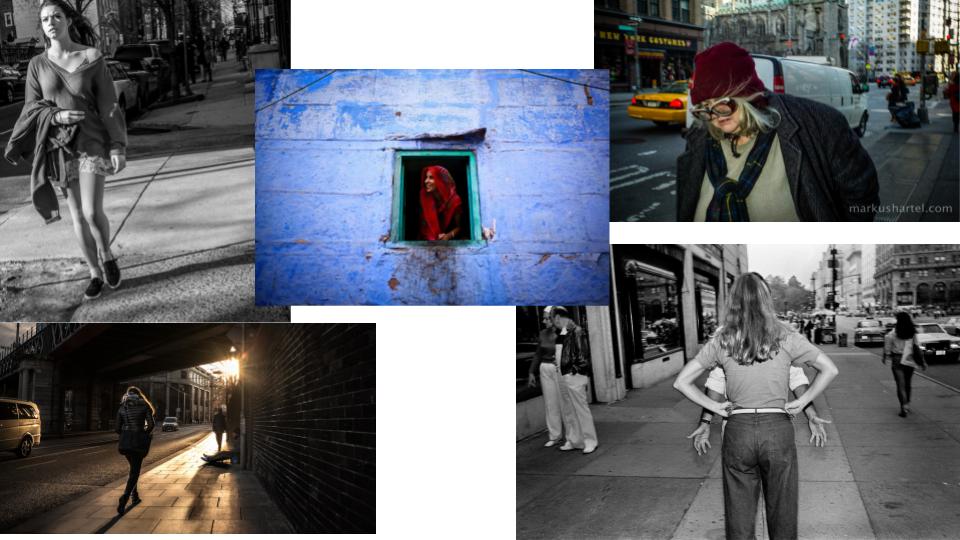
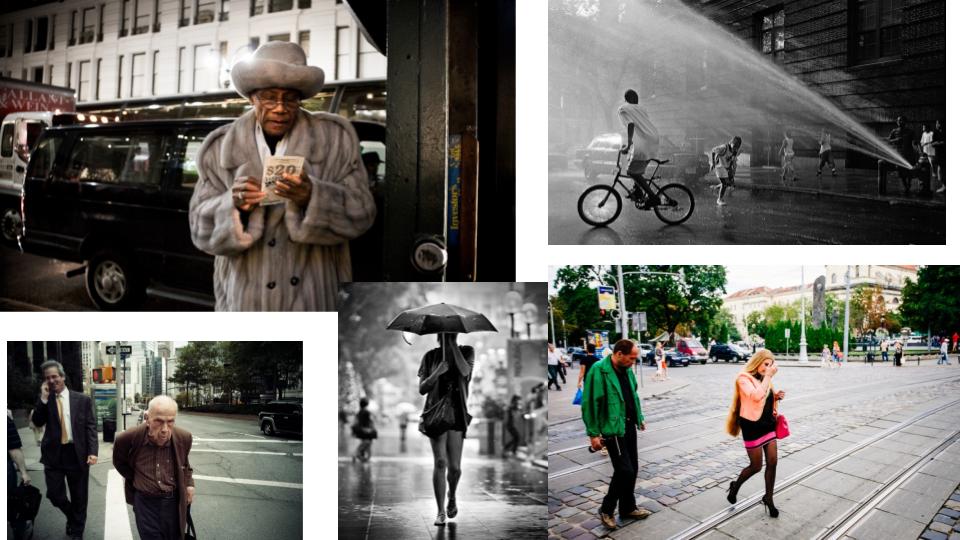
My Response:

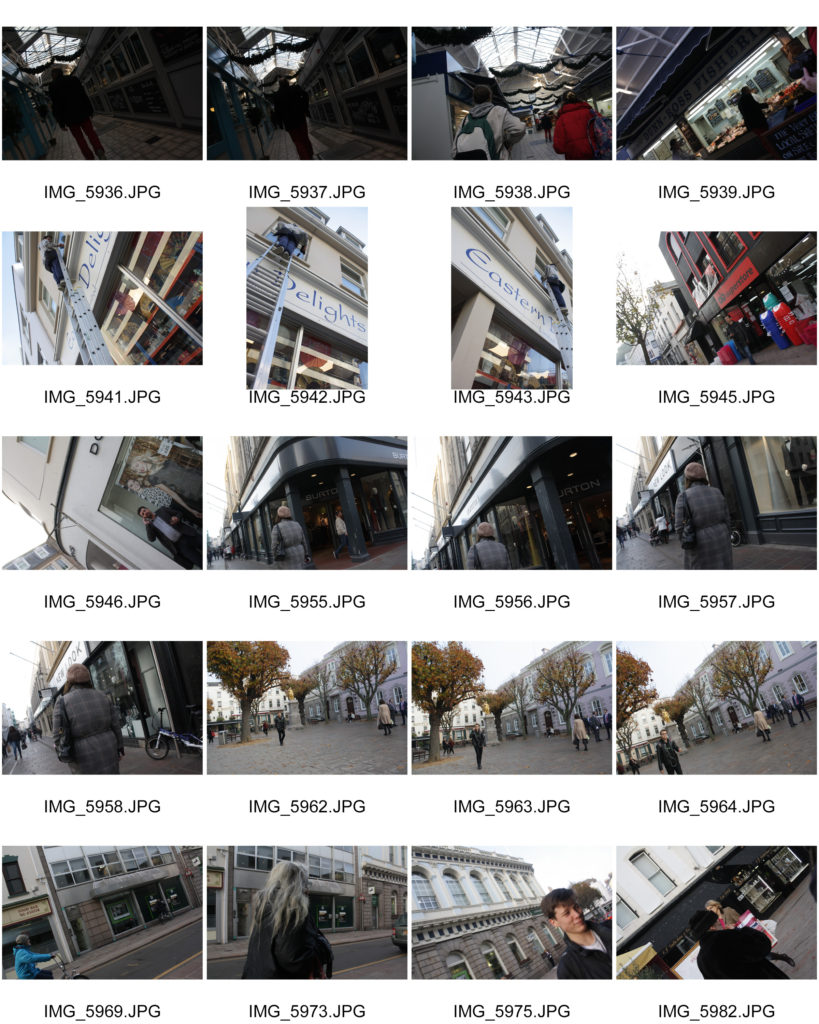
Final Images:
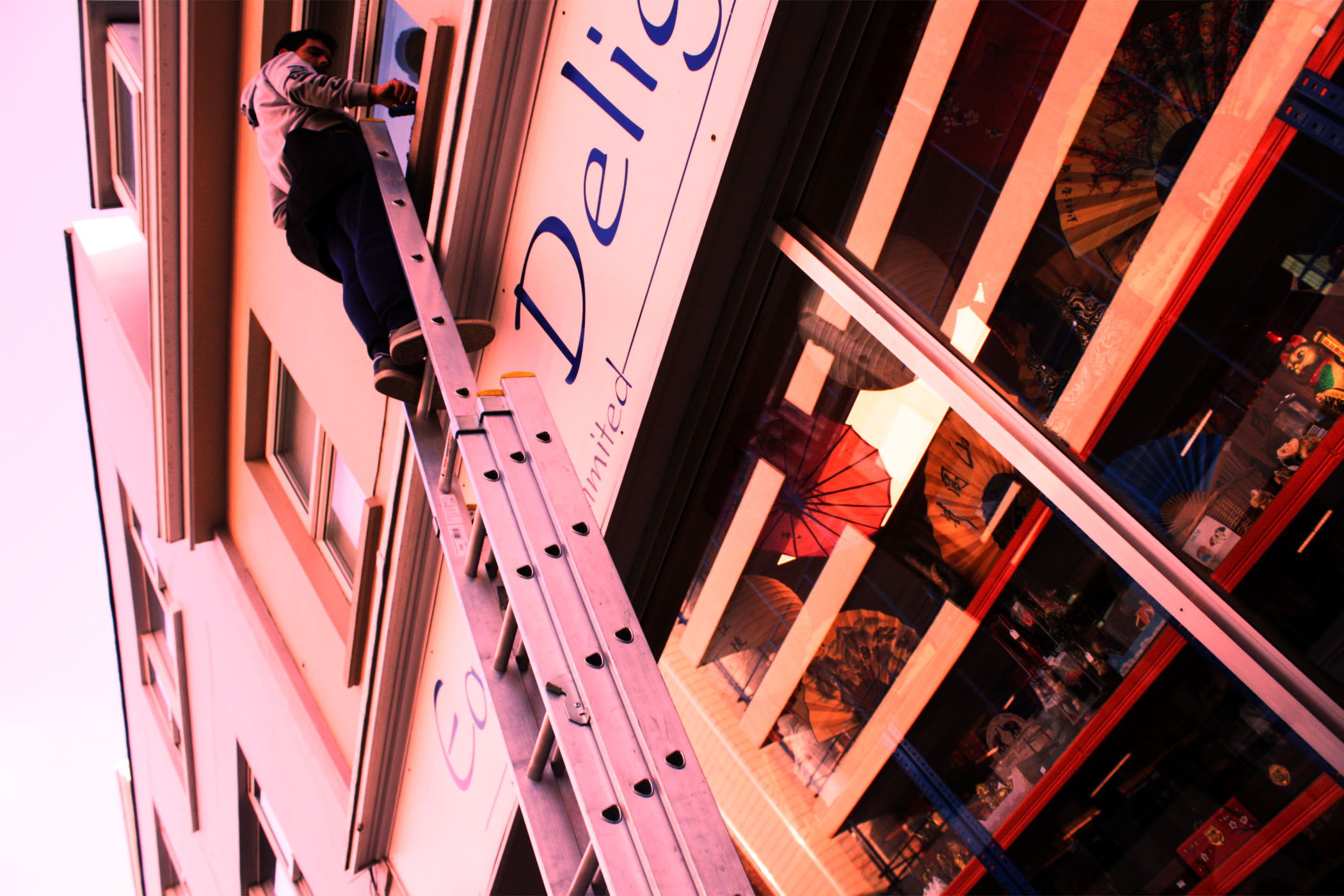
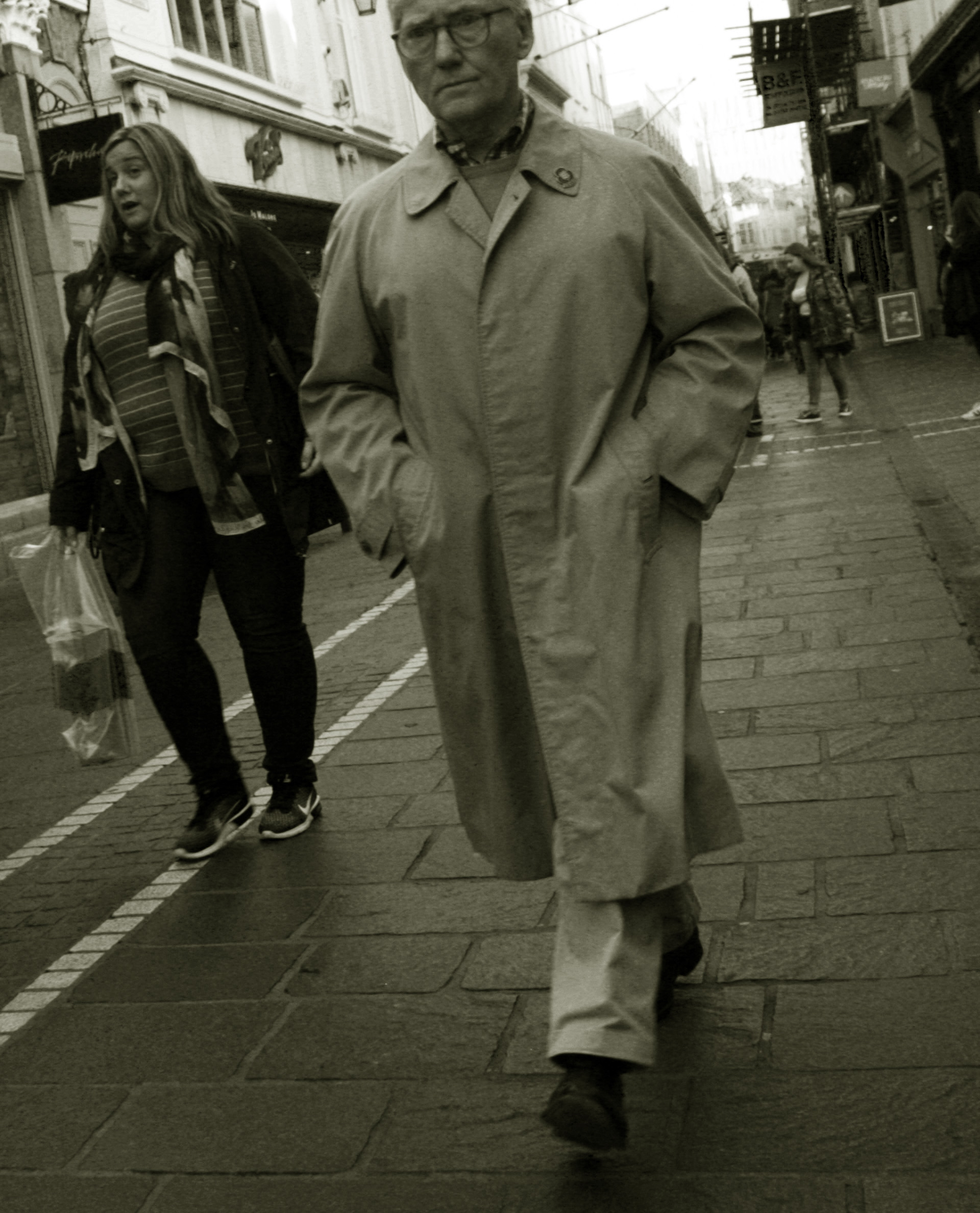
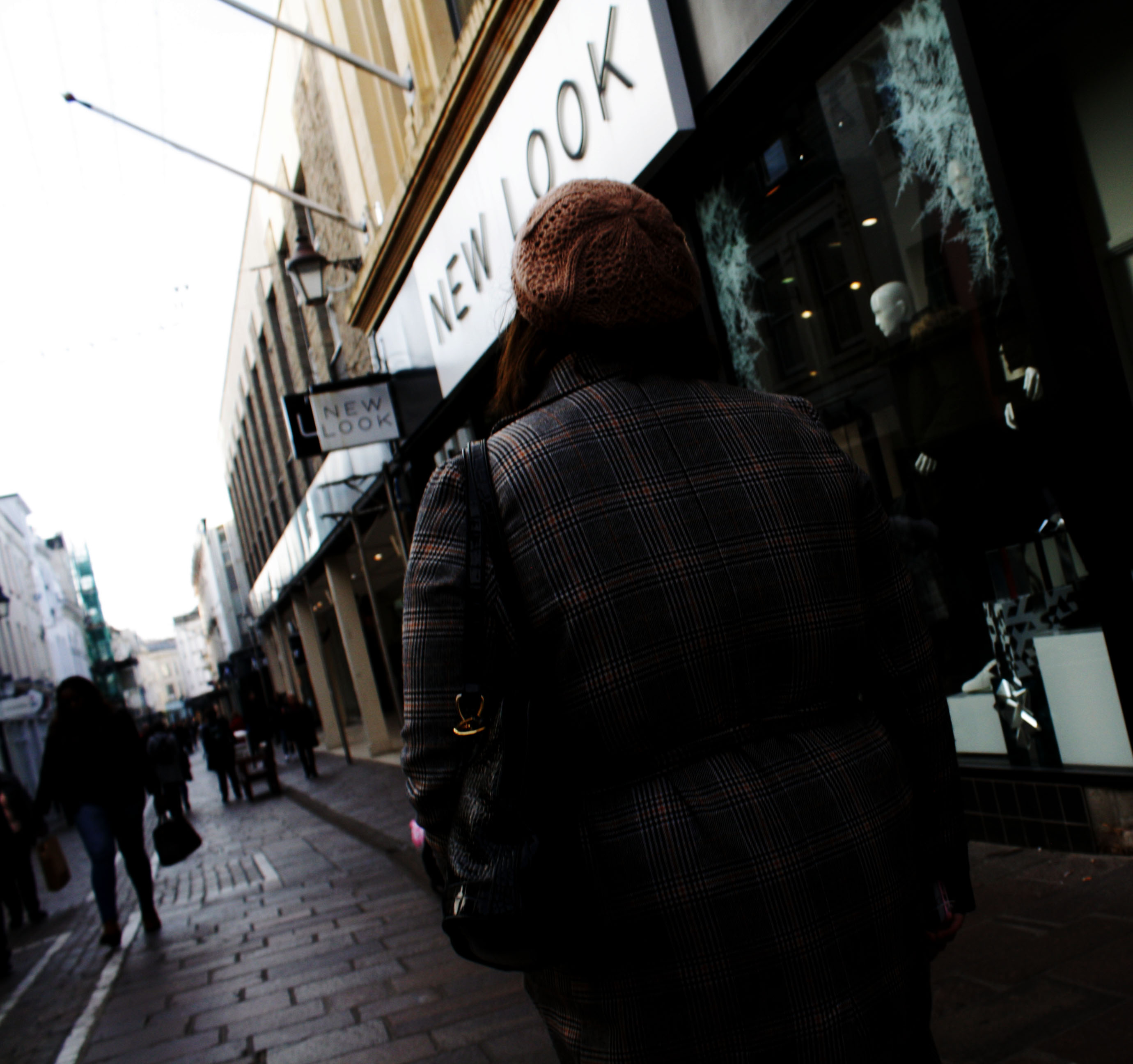
Mood Board:


My Response:


Final Images:



The images below show my experience of trying to do street photography. My photography class went to town to capture a variety of images of people in their natural environment. The publics reaction were all very different as some appeared to be annoyed that their pictures were taken without consent, others were smiling, but the majority didn’t seem to mind as they carried on walking. At the start I asked for consent to take people’s pictures. However, I then realised that if I did that for every person I walked by all my images would be staged and not candid as most street photographs are. It would also take a long time to ask for consent from each person and I only had 30 minutes to take as many street photographs as I can. So I began taking loads of images of people in different parts of town, hoping that some of the results were good. Although I had my camera on sports mode to capture subjects in motion, some of the images turned out blurry. Even though it was a struggle to take street photographs, I did manage to capture some focused moments of people walking. The zoom on the camera lens also helped as I could take close up images of people without having to get myself close to the subject. The contact sheet reflects my own experience of doing street photography for the first time.
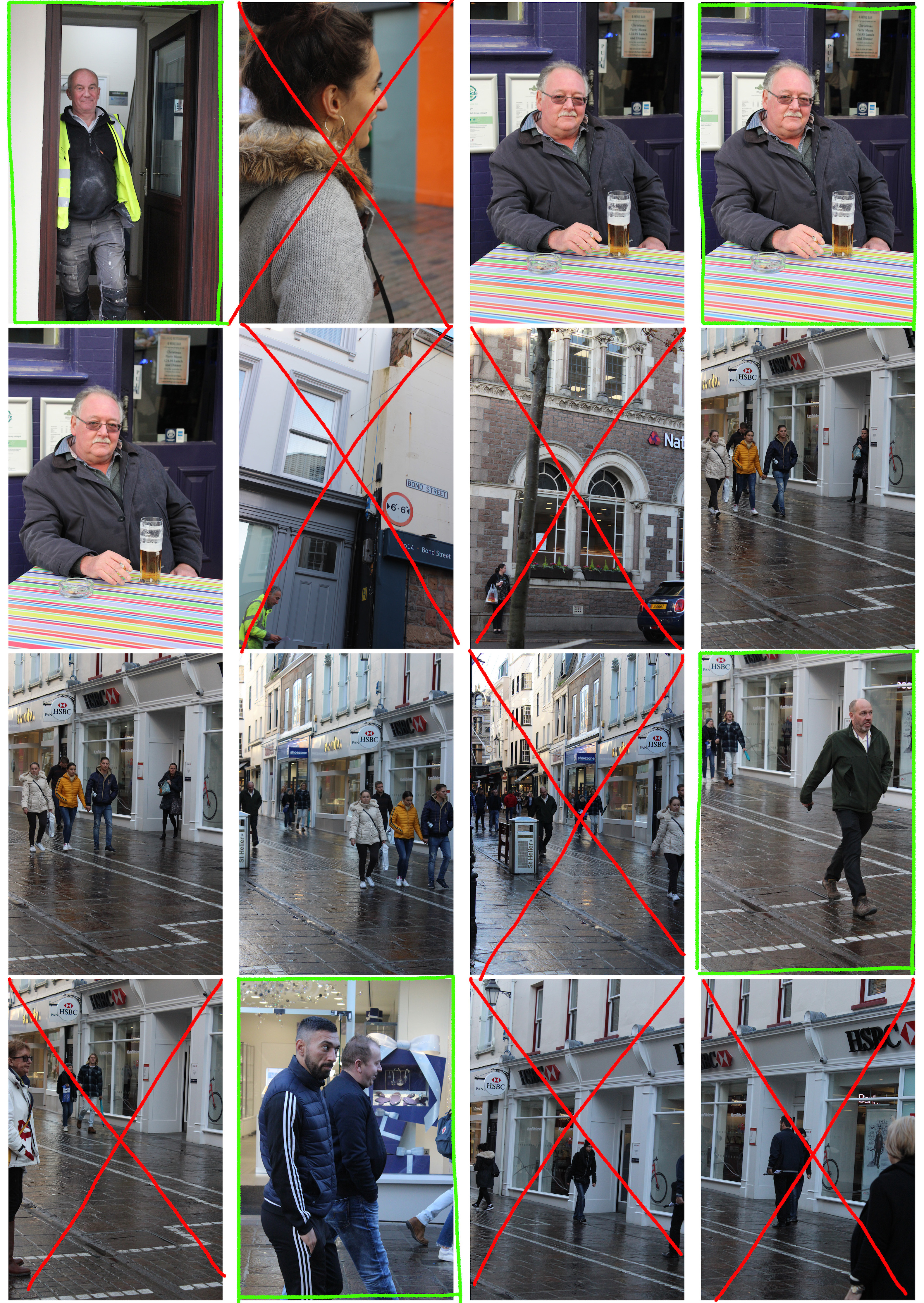
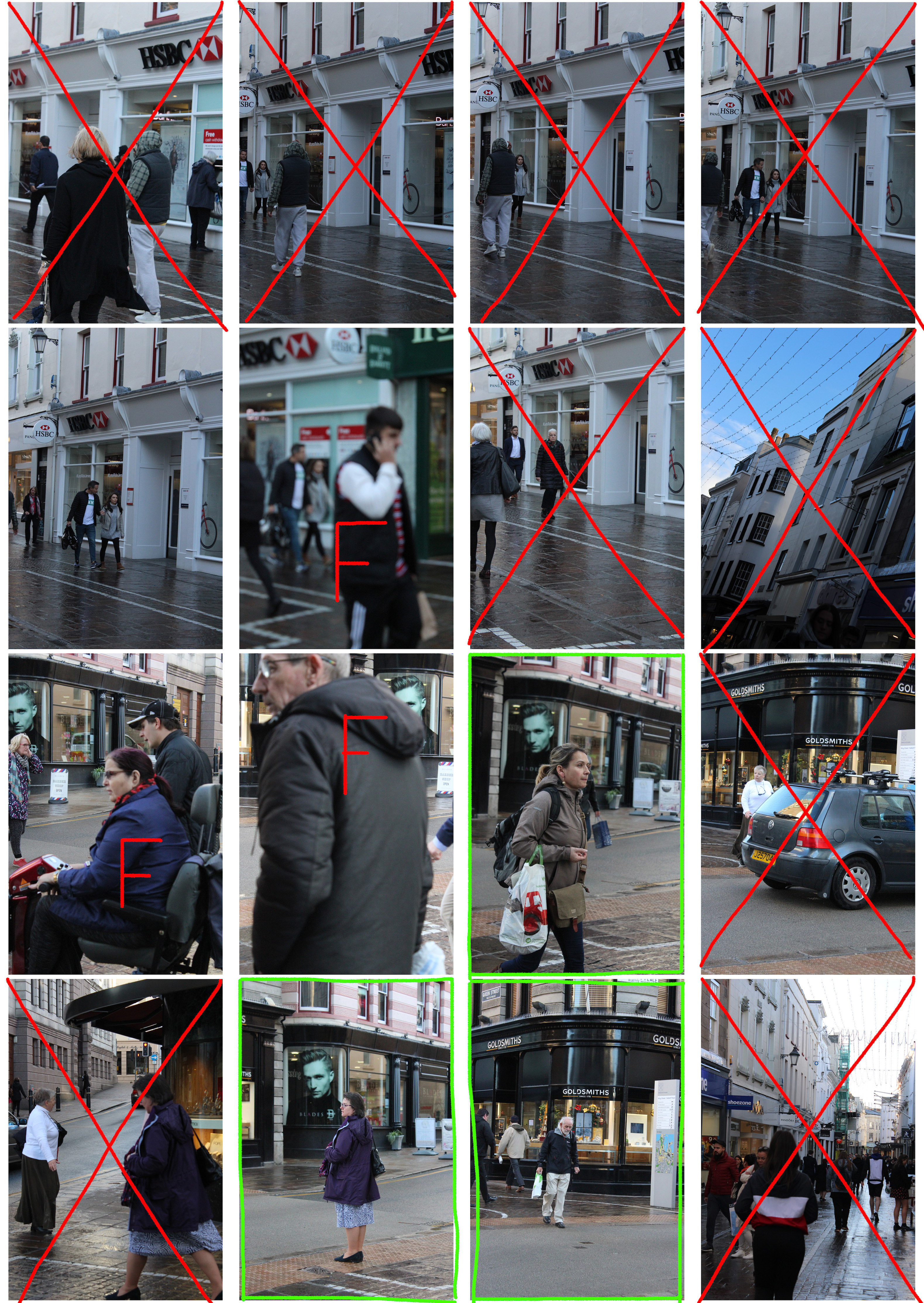







When: Saturday Where: Town, specifically the market Who: The workers of the shops/stalls How: Using a Cannon camera with a 25-55mm portrait lens Why: To capture the variety of different cultures, ages and people in their working environment.

I didn't have a lot of time to take the photos however I did manage to capture a few.
I chose these 4 images because I feel it captures the different characters of the different workers. My favourite is the first one featuring the jewellry shop worker. In real life he was quite a moody character and I believe I caught that on camera. I also like the depth of field within the image. Unfortunately the lighting in quite a few of the photos weren't very good and were very harsh, however that was an environmental factor I couldn't control because I had the use the natural light of the workplace. Also, the image of the women in the bakery had a white balance that was too warm.
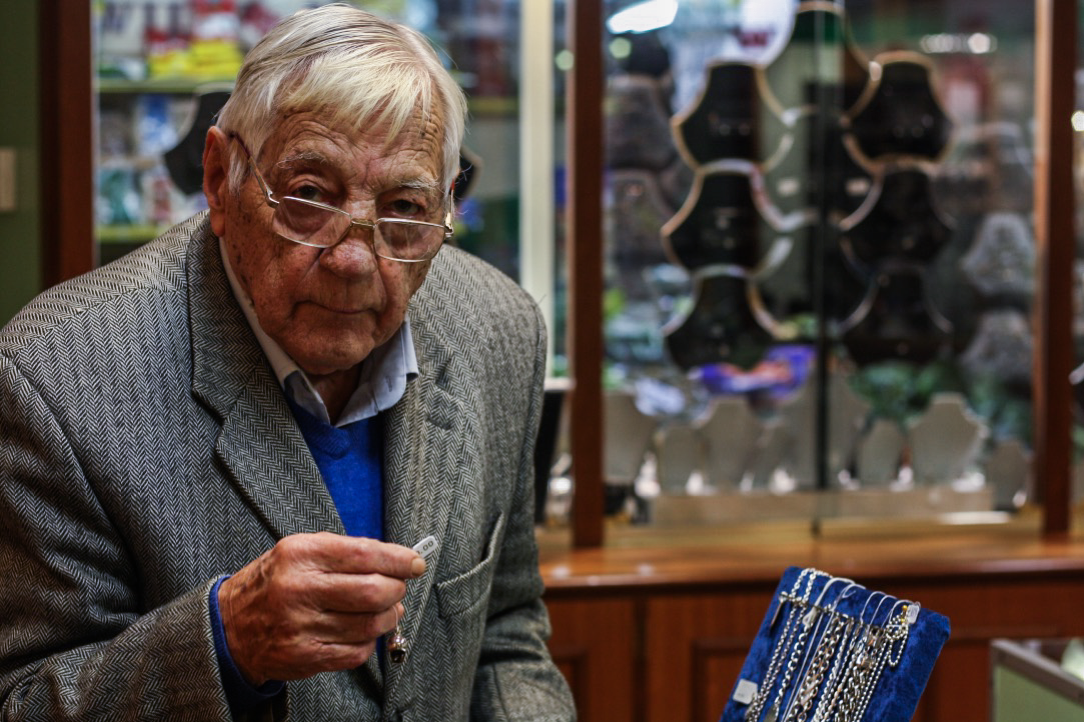

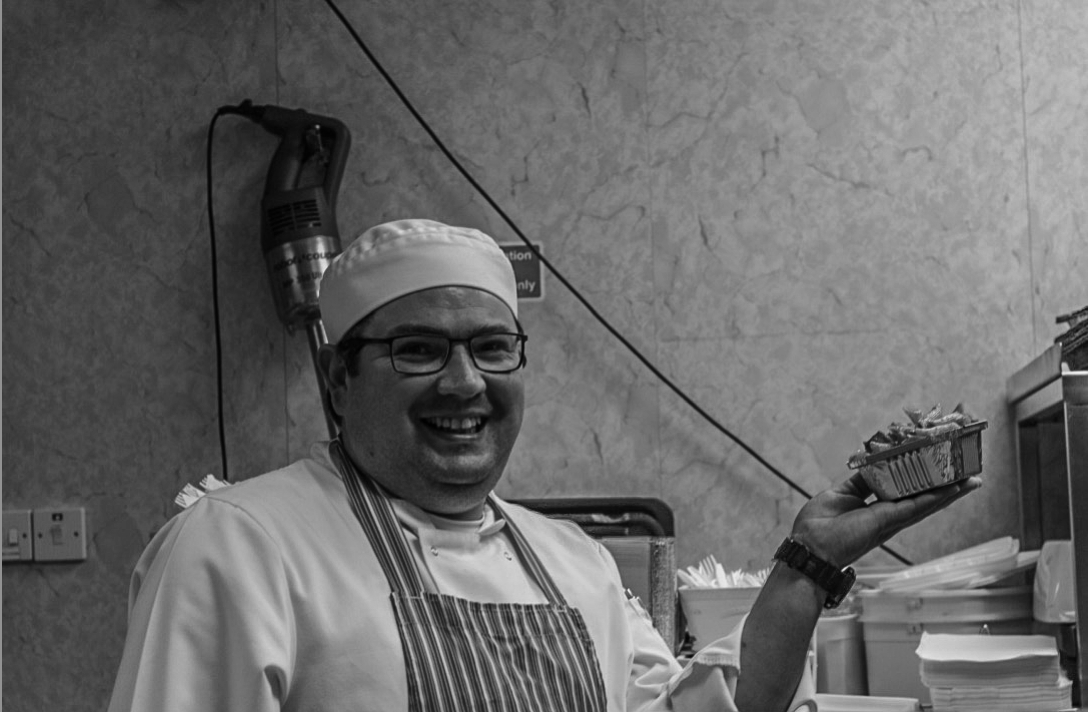
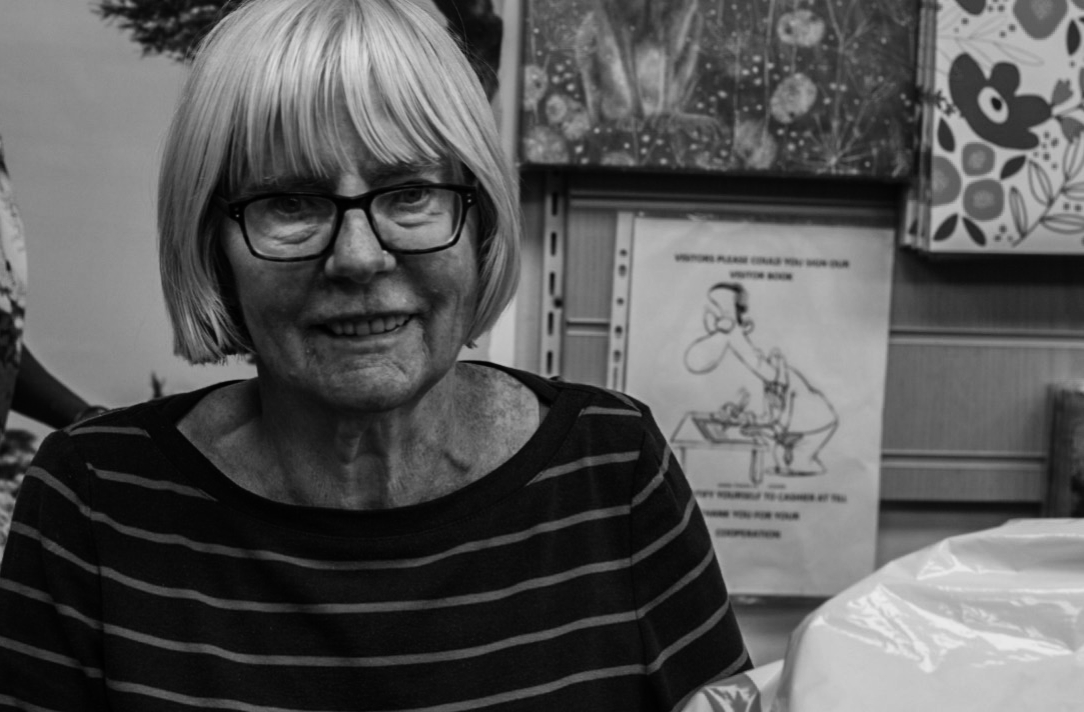
In the second image of the bakery, I had to ammend the warm white balance by applying a cool coloured overlay effect on lightroom to even it out and neutralise it. For the jewellry worker I adjusted the clarity, contrast and exposure. For both the 3rd and 4th image I applied a black and white preset, then I adjusted theexposure, contrast, clarity and noise of the photo. I also slightly cropped the 3rd photo to remove the counter in the bottom left corner.
When: During school timesWhere: At Hautlieu School Who: The teachers, workers and students of the school How: Using a cannon camera with a 25-55mm portrait lens Why: To capture the spirit and different personalities/identities of the different people in the workplace.
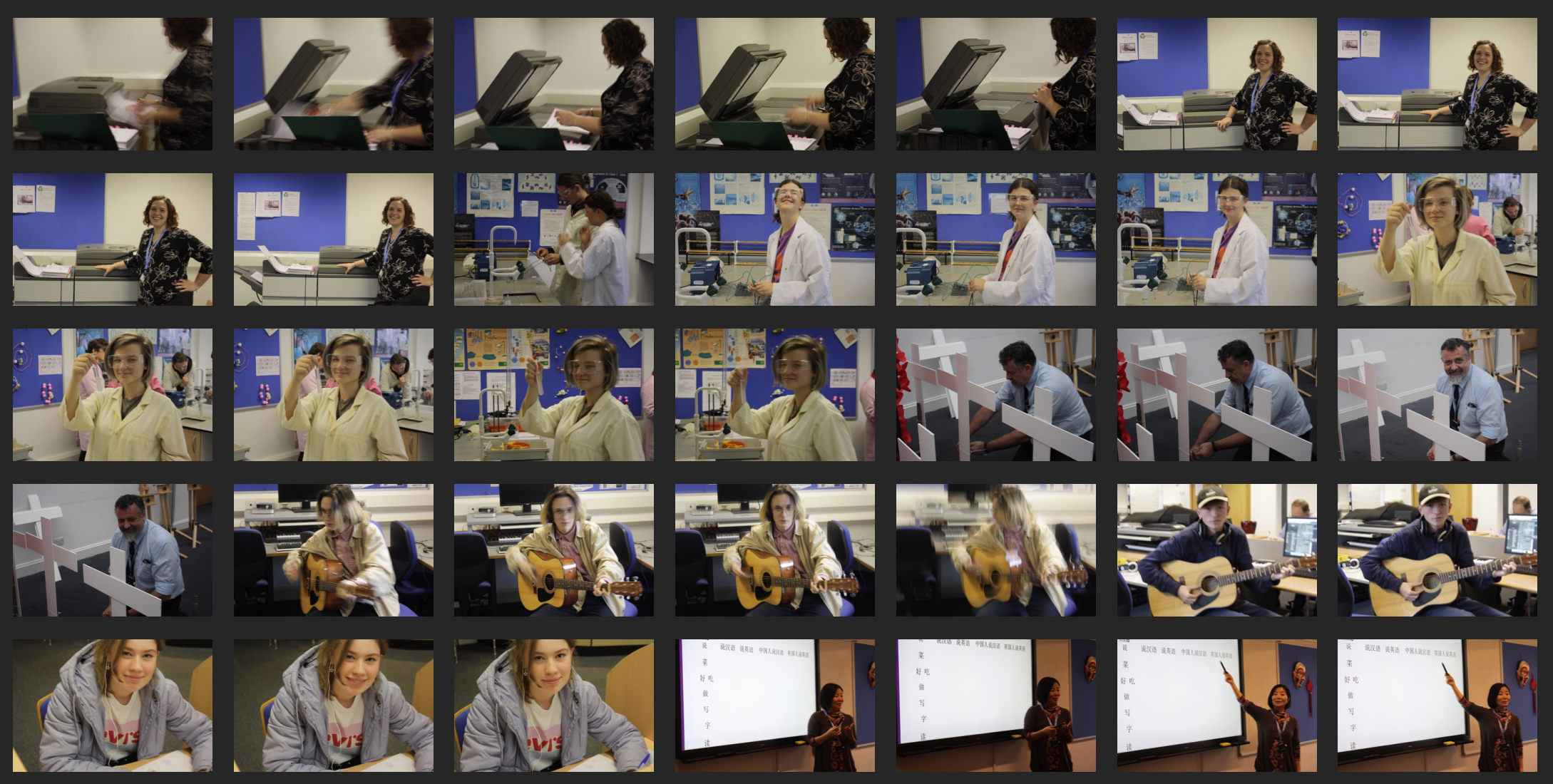

I took a lot of pictures in this shoot, however the shutterspeed of the camera was acting up, so unfortunately as a result many of the images are blurry.
I like how some of the images turned out, such as the maintainance man, the science student, and the two female teachers. However I don't like the image of the boy with the guitar because it is blurry. However I wanted to try to ammend during manipulation. Also, I am slightly bugged by the image of the mandarin teacher because the white balance is too warm.
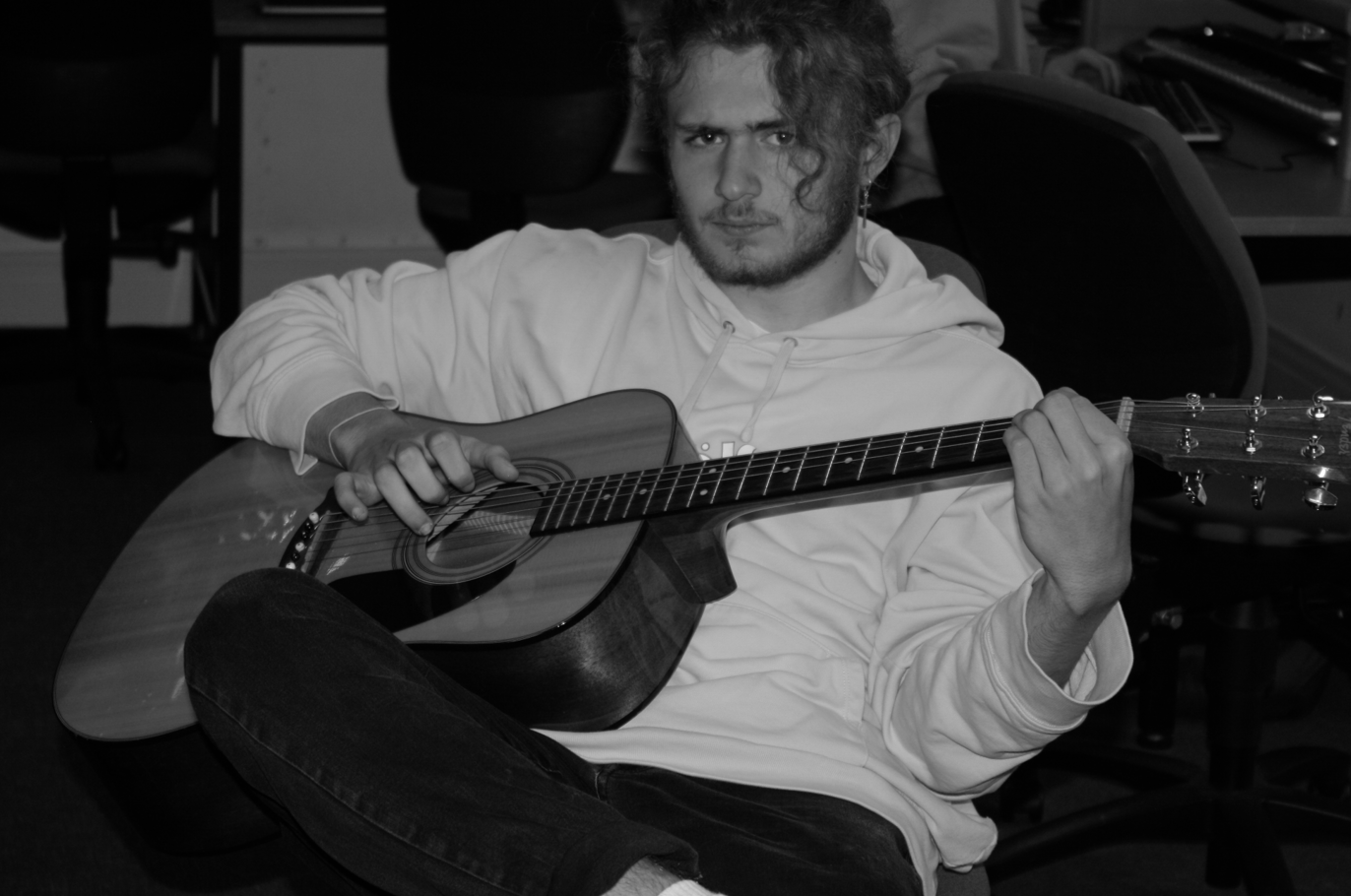
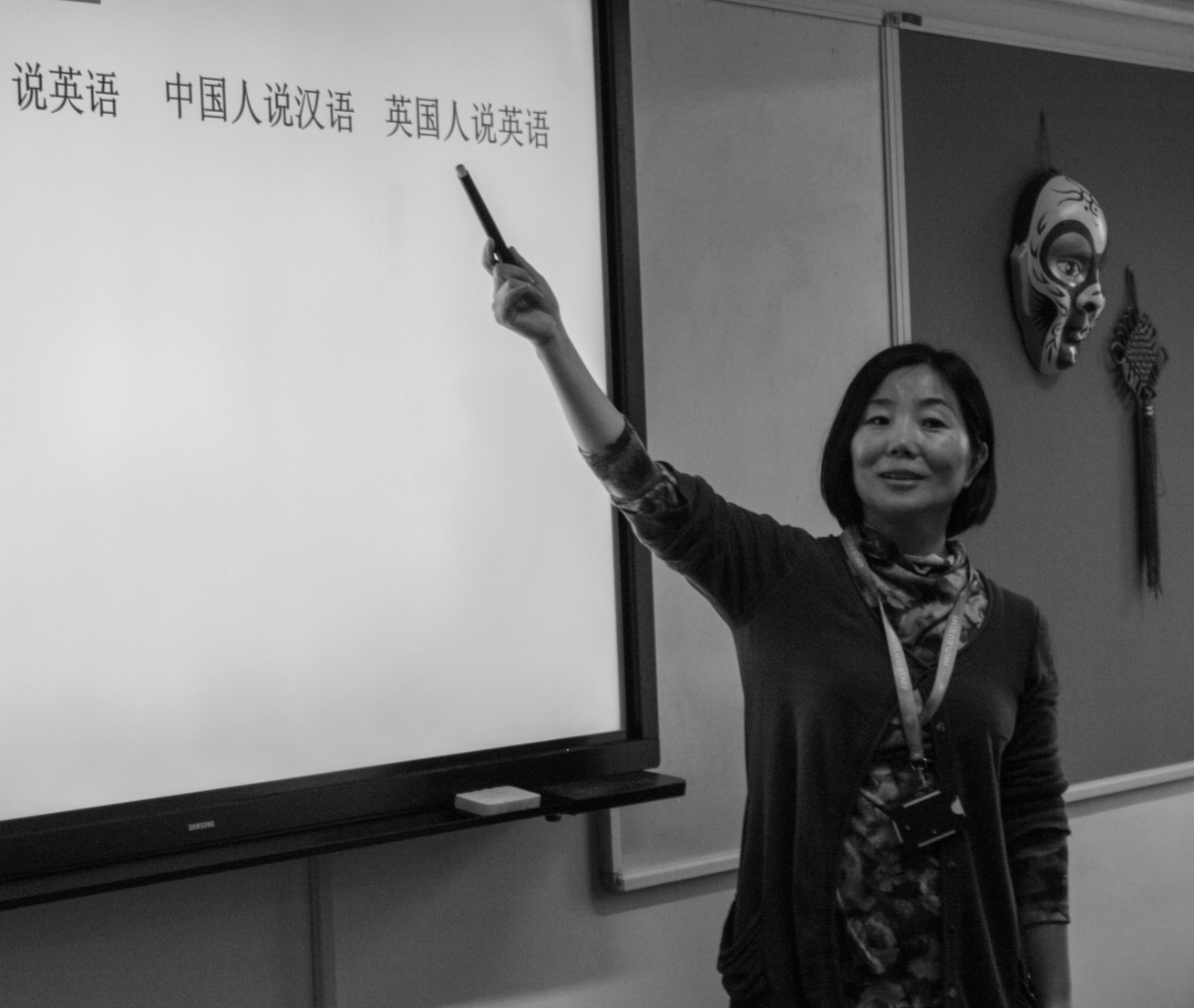
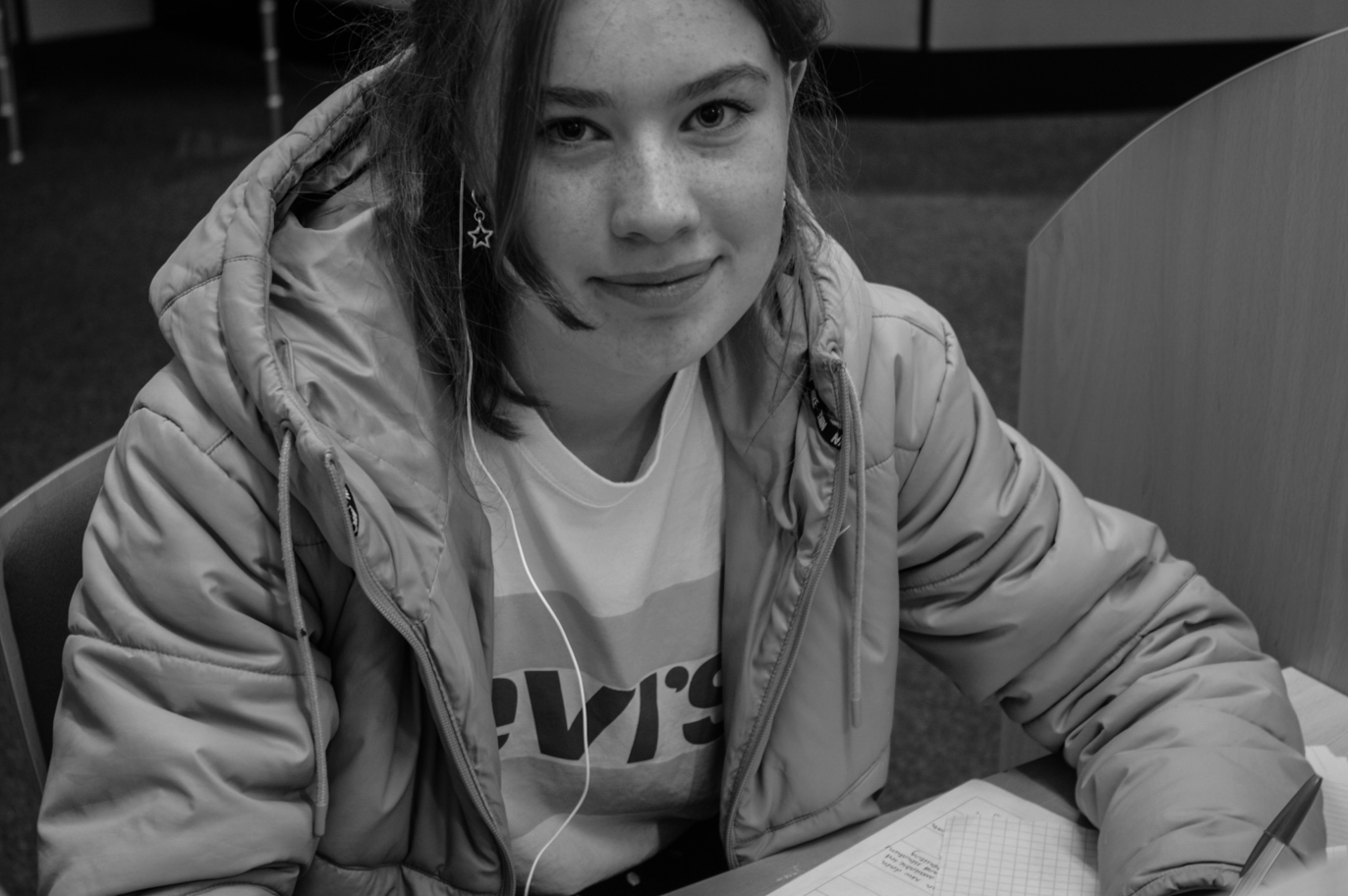
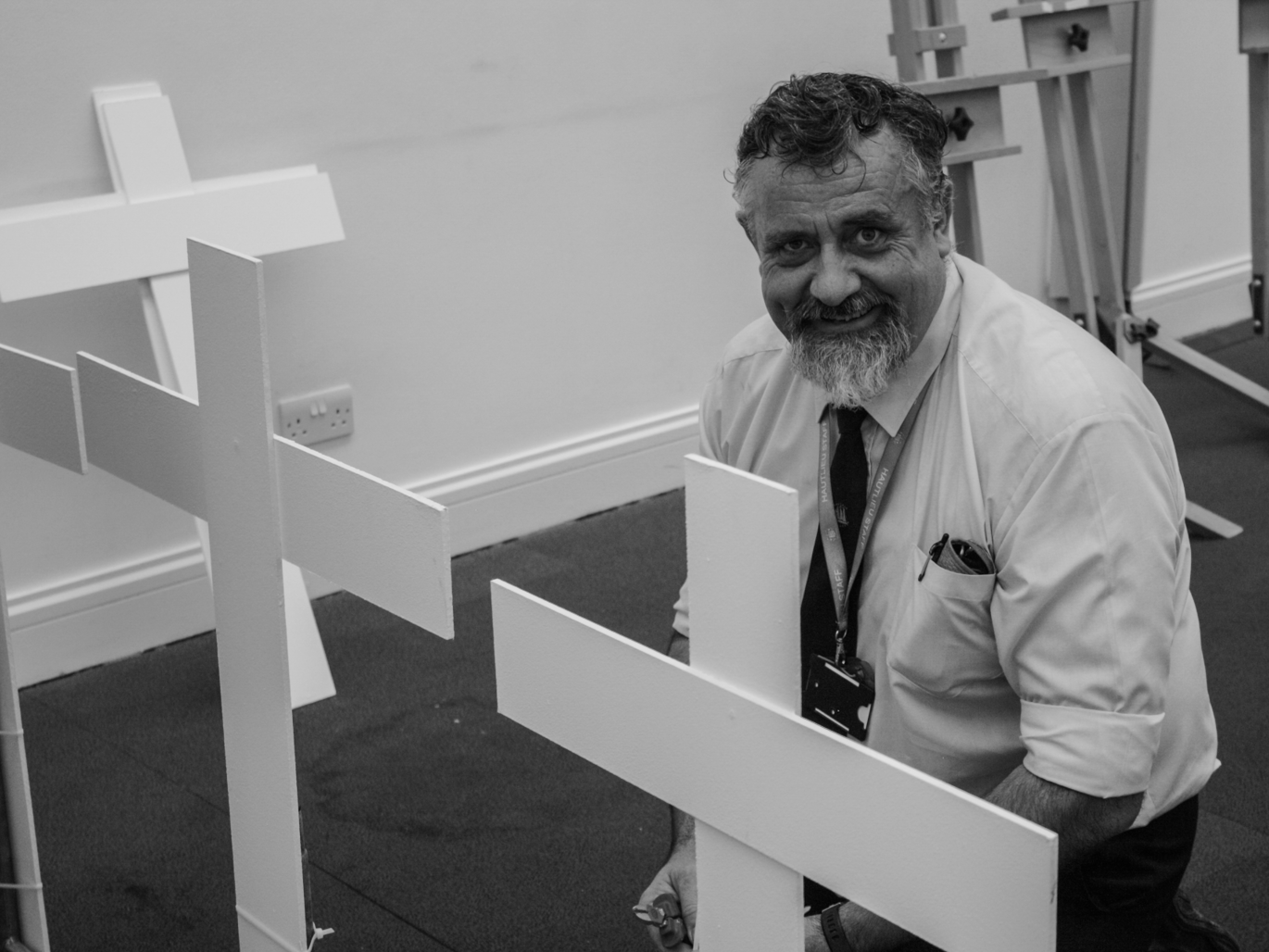
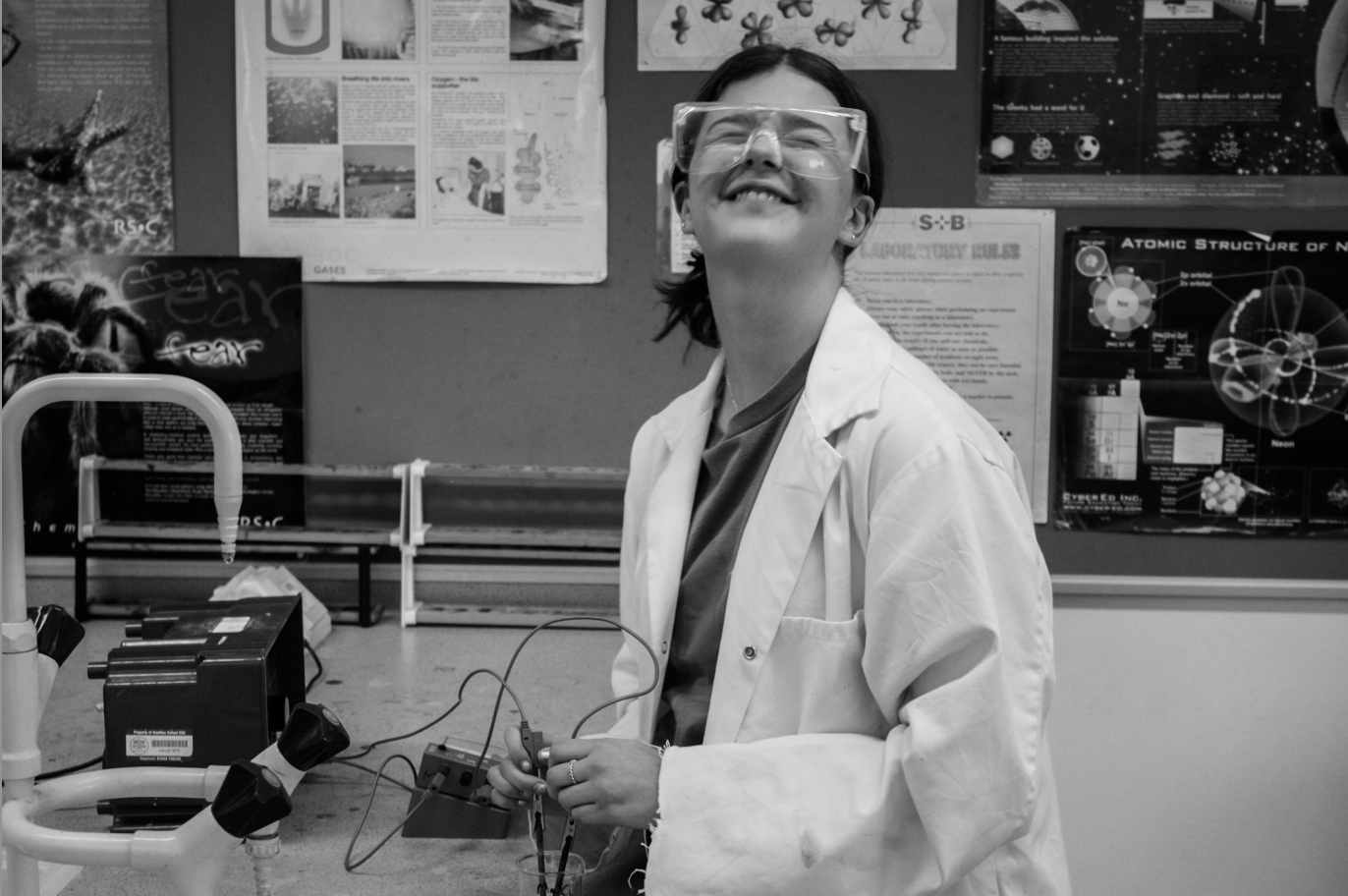
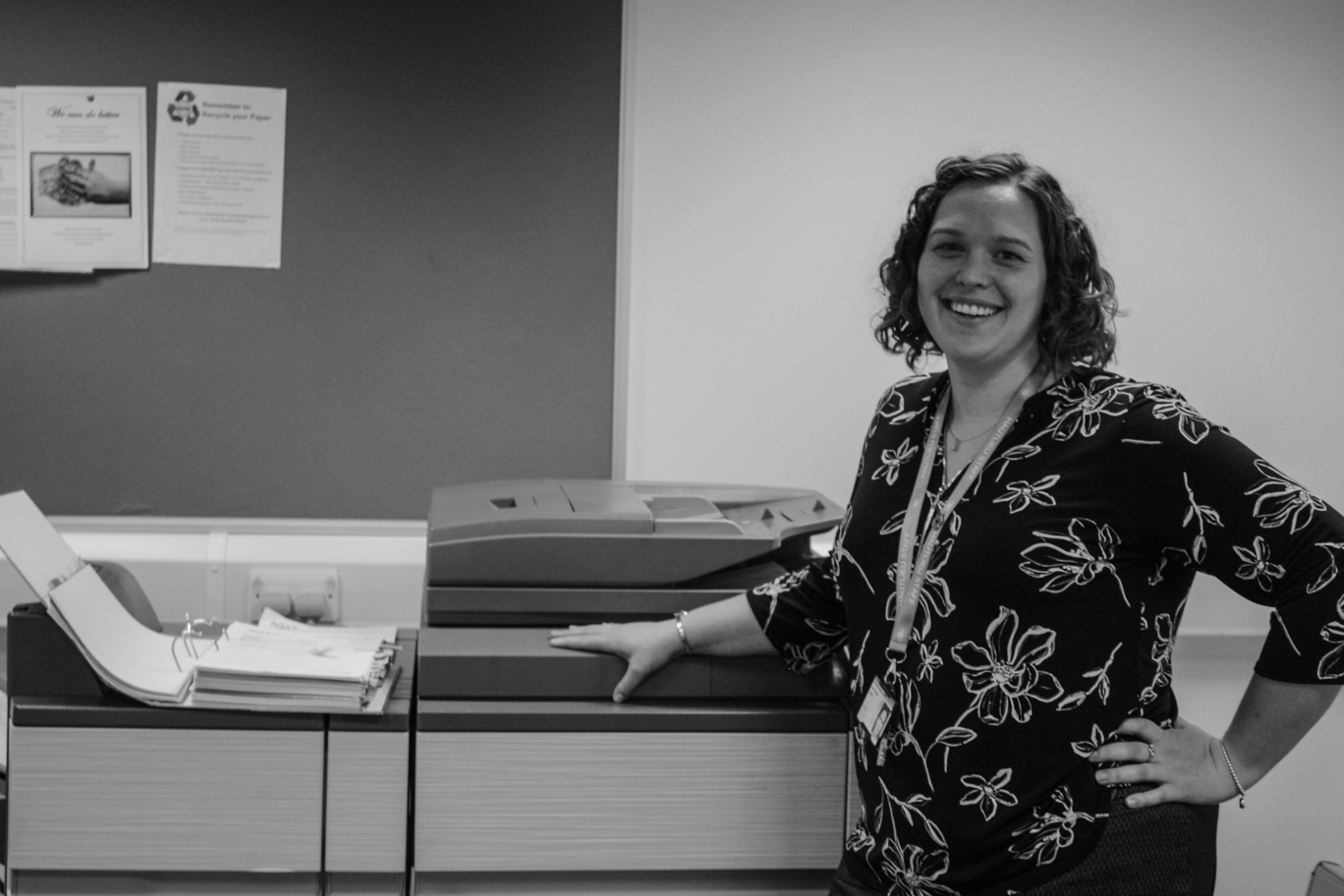
For all of the images I applied a black and white preset on adobe lightroom because I feel it drew more focus onto the actual people in the images. I then cropped and adjusted the contrast, clarity, exposure, lights and shadows of the images until I got a result I wanted. My favourite image is of the maintainance man because I feel i captured both his personality and the aptmosphere of the photo which was very friendly.
There are some images I like out of the shoots, however there is a lot to be learned. I need to figure out white balance a lot more, and the focus of the camera. I need to continue practicing until I nail getting the perfect focus on my images. I also need to take a lot more photos of a vast variety of people to be able to create a vast contrast on the amount of different people.
Henri Cartier-Bresson and Bruce Gilden:
Bruce Gilden (born 1946) is an American street photographer. He is best known for his candid close-up photographs of people on the streets of New York City, using a flashgun. He has had numerous books of his work published, has received the European Publishers Award for Photography and is a Guggenheim Fellow.
Some of Bruce Gilden’s work:
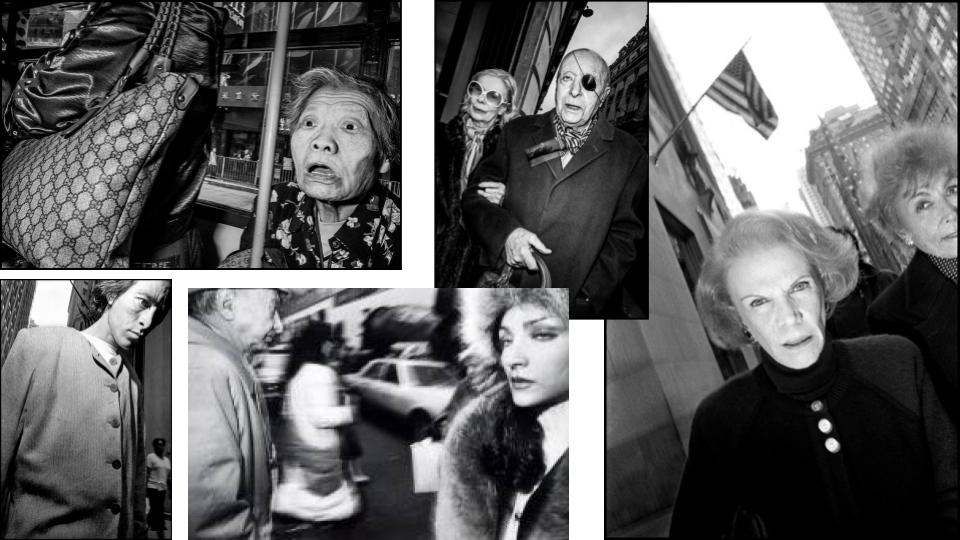
Gilden’s work is very different from the work of as it is more up close and intimate. Cartier-Bresson photographed subjects from further away and incorporated elements of the setting and other objects in his images to create a composition with a strong sense of communication between the subject and the rest of the image while Gilden’s work is largely composed of close up images of individuals or groups of people, focusing more on the obscurity of the subject themselves as opposed to the surrounding and how it intertwines with the scene.
Henri Cartier-Bresson and Vivian Maier:
Vivian Maier (born in February 1, 1926 – April 21, 2009) was an American amateur street photographer, who was born in New York City, but grew up in France. … Fondly remembering Maier as a second mother, they pooled together to pay for an apartment and took the best of care for her.
Some of Vivian Maier’s work:

Vivian Maier’s work is similar to that of Cartier-Bresson as it is composed of a subject in a specific setting. However Maier’s work is based more on the subject, incorporating the setting to a lesser extant that the images produced by Cartier-Bresson. One thing that is strikingly different between the work of the two photographers is that Cartier-Bresson predominantly used unaware subjects in his work whereas Maier tends to have people looking at or atleast aware of the lens. This creates a different sort of intimacy between the photographer and the subject.
Henri Cartier-Bresson and Trent Parke:
Trent Parke (born in 1971) was raised in Newcastle, New South Wales. Using his mother’s Pentax Spotmatic and the family laundry as a darkroom, he began taking pictures when he was around 12 years old. Today, Parke, the only Australian photographer to be represented by Magnum, works primarily as a street photographer.
Some of Trent Parke’s work:

One difference between the work of Cartier-Bresson and Parke is that Parke’s photographs tend to be darker, both visually and conceptually with the images having a more stark contrast as well as a darker message behind them. Parke’s work reflects dream-like compositions with the photographer including edited or partially blurry background/blurry image through editing or changing shutter speed. While Cartier-Bresson’s work is largely joyful and full of eye catching scenarios involving every day people instead of a mysterious or enigmatic feel.
STREET PHOTOGRAPHY
Street photography is also known as candid photography but they are very different. Street photography feature unmediated chance encounters and random incidents within public places. Street photography doesn’t have to have a street present within it or even an urban environment. It can focus on people and their behaviors in public, it is similar to social documentary as you are capturing people in their natural state. A street photographer can be seen as an extension of the flâneur. A flâneur is a french noun that is an act of strolling with all of its accompanying associations. It is to “wander with no purpose”.
Examples of street photography;

CANDID PHOTOGRAPHY
Candid photography is a photo captured without creasing a posed appearance. Photos like these can be achieved in many ways such as, when the subject is moving, avoiding prior preparation with the subject, by surprising the subject or by not being a distraction to the subject during the process of taking the photos. The photographer has to work with the lighting they are presented with and the environment they are in. When taking a candid photo camera are normally quite small and black as it avoids disturbing the subject.
Here are examples of candid photography;
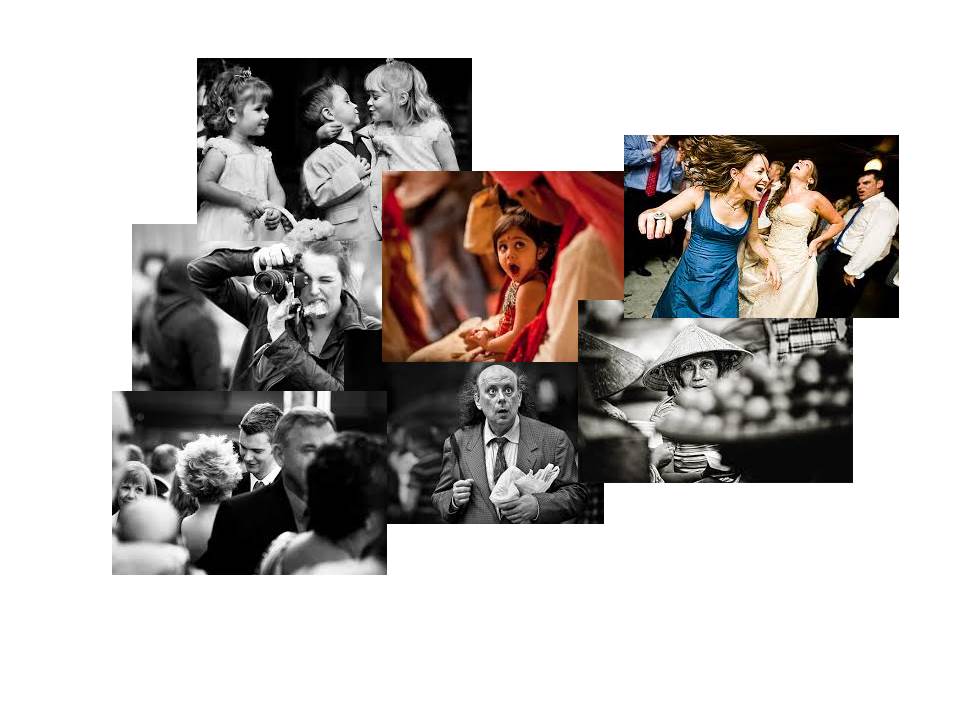
BRUCE GILDEN
Bruce Gilden is a well known American street photographer who captured close ups of people on the streets of New York. Gilden didn’t care if he annoyed people out on the street whilst taking his photos, he had the confidence to take a photo and carry on with his day even if he had to deal with conflict from the people in his photos. He used flash whilst taking these photos, to really help capture the detail and facial expression of his subject. His images are also in black and white which really draws attention to the subjects facial expressions and what they look like. Gilden photographed a variety of different people to show the type of people around New York. Here are a few of his photos that I enjoyed looking at;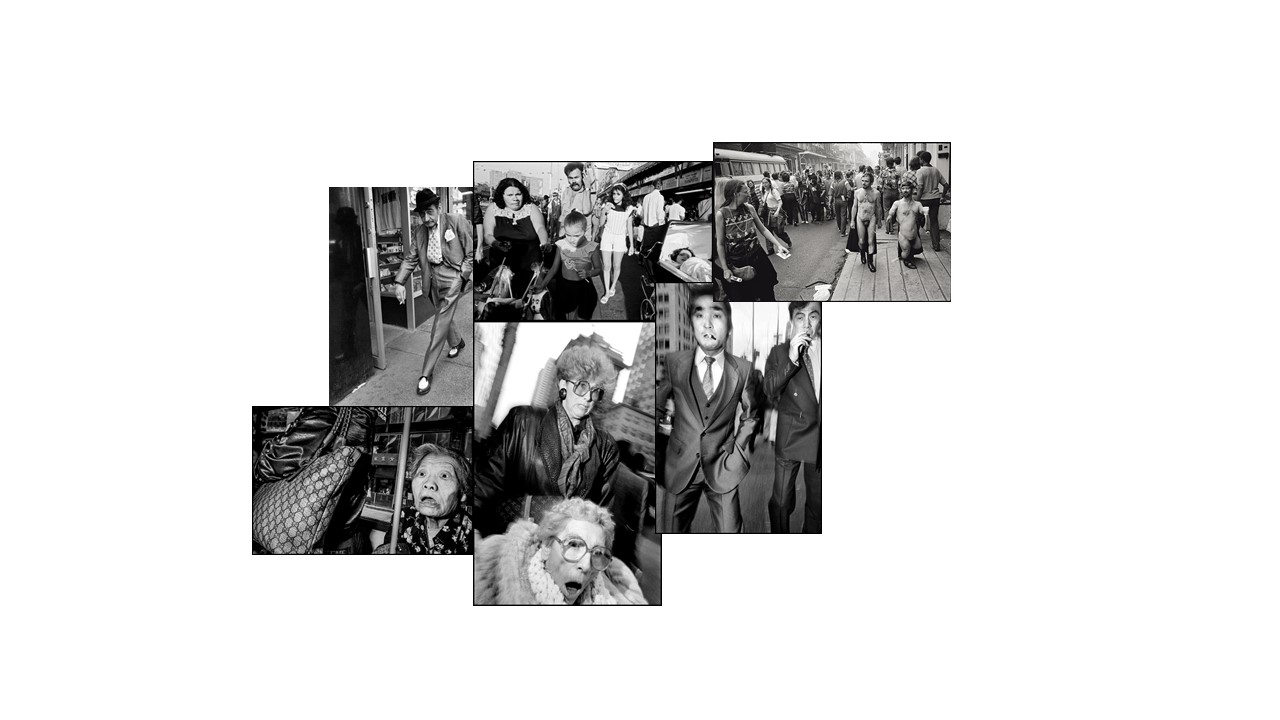
IMAGES FROM MY EXPERIMENTATION WITH STREET PHOTOGRAPHY
I didn’t enjoy street photography as I found it awkward and uncomfortable of taking candid photos of strangers. Also when taking most of my photos I struggled to get the sharp focused images, so most of my images where blurry, along with either too dark or over exposed. This experiment gave me a feel of a different type of genre of photography and has taught me different techniques.

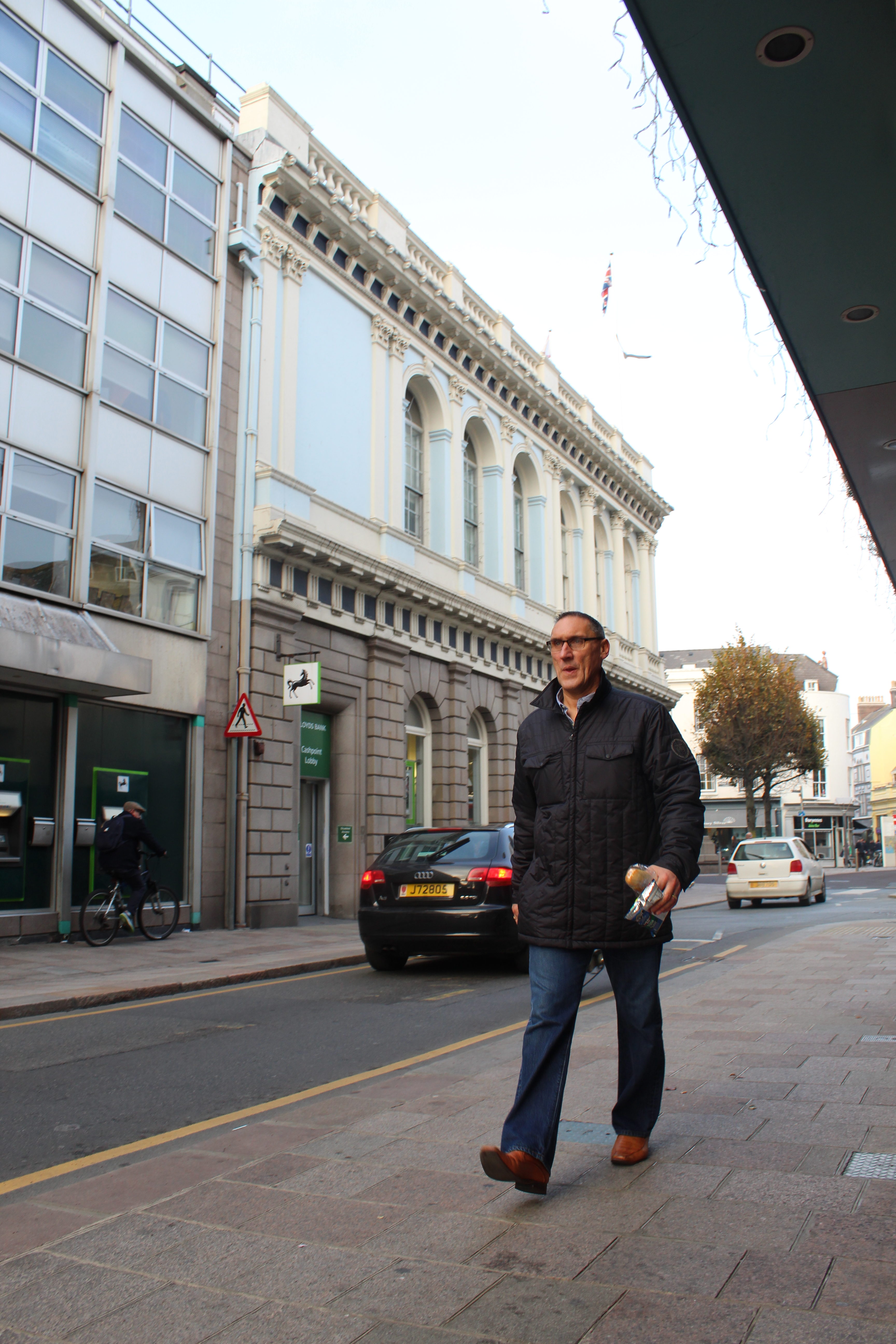
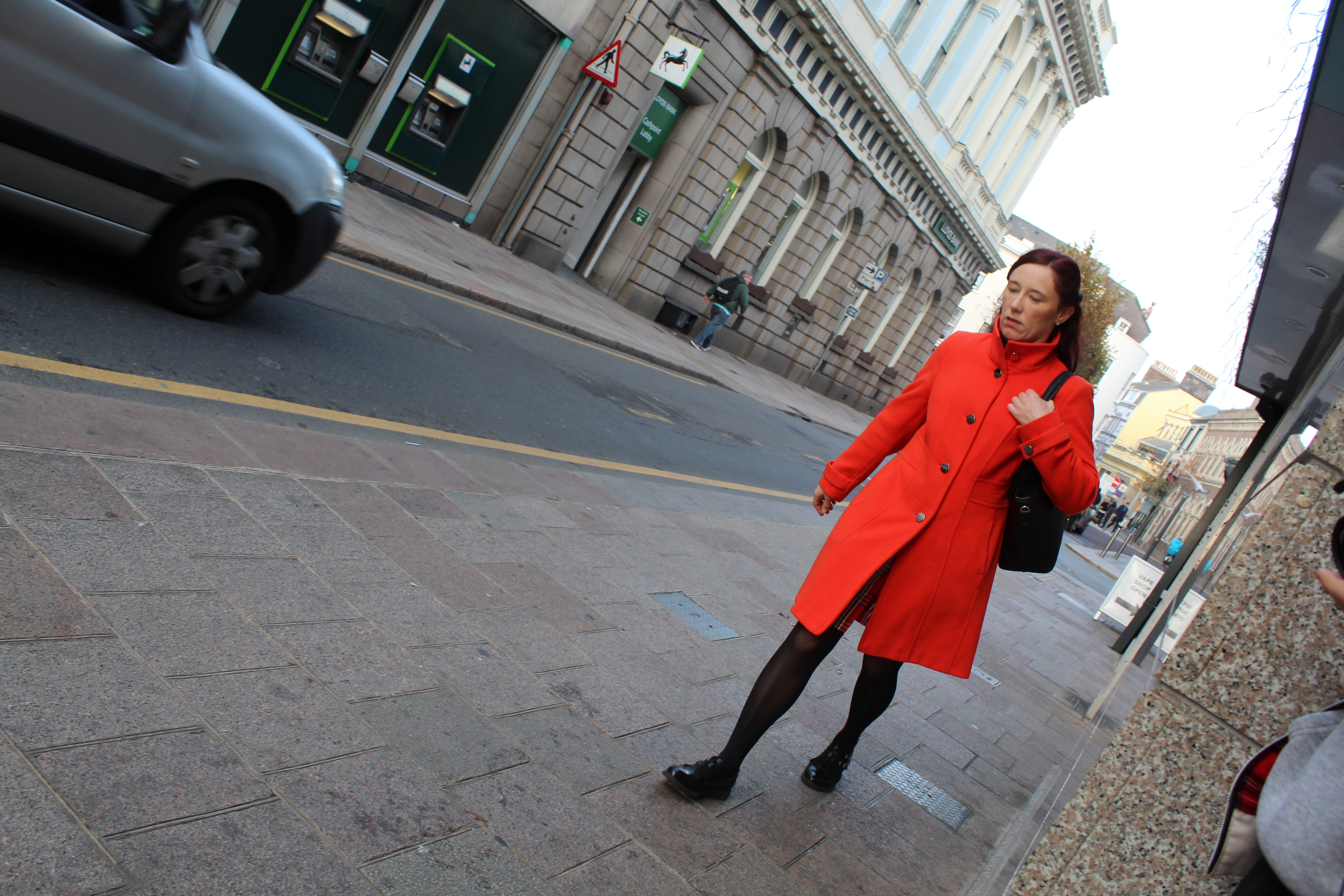

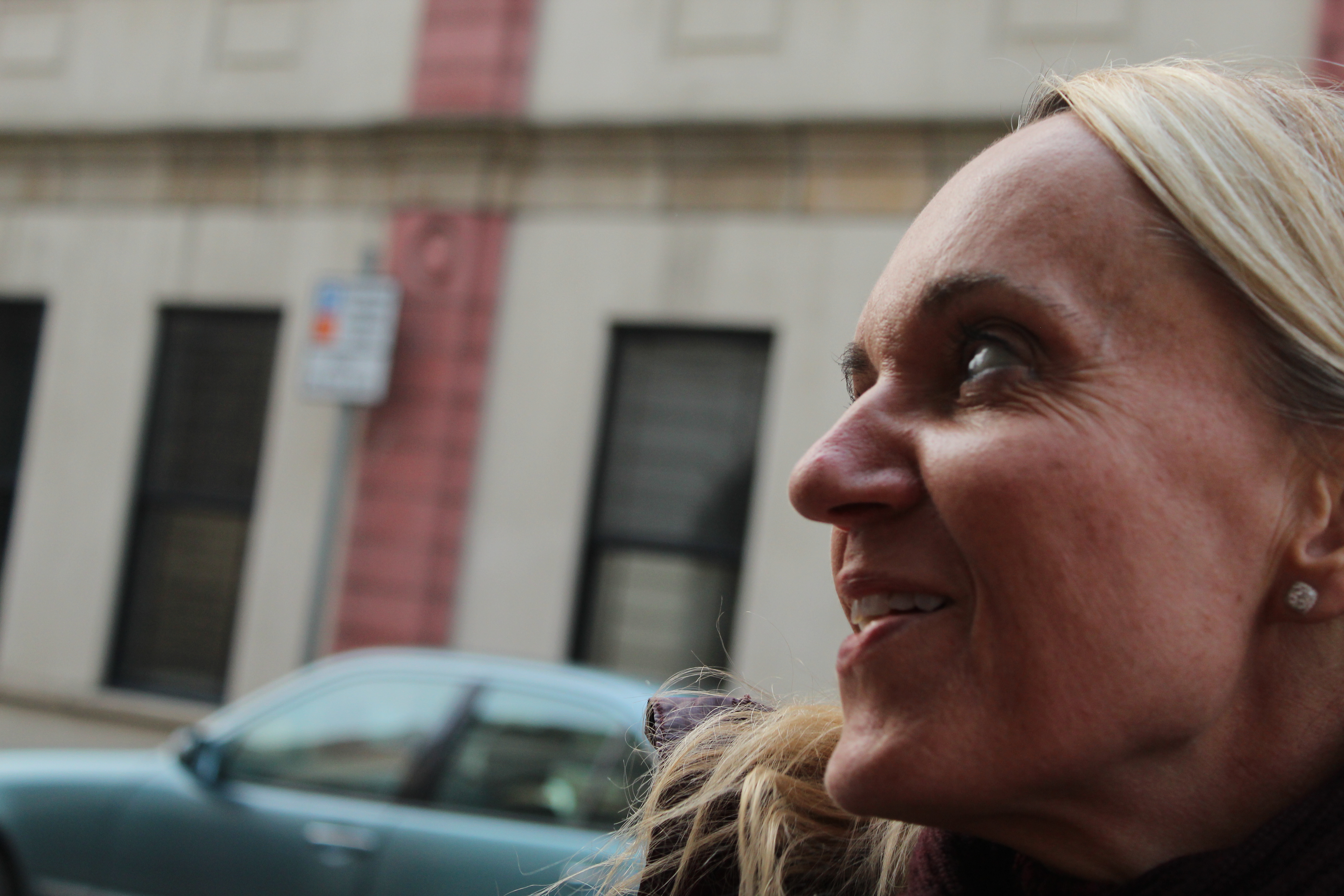


MY FINAL IMAGE
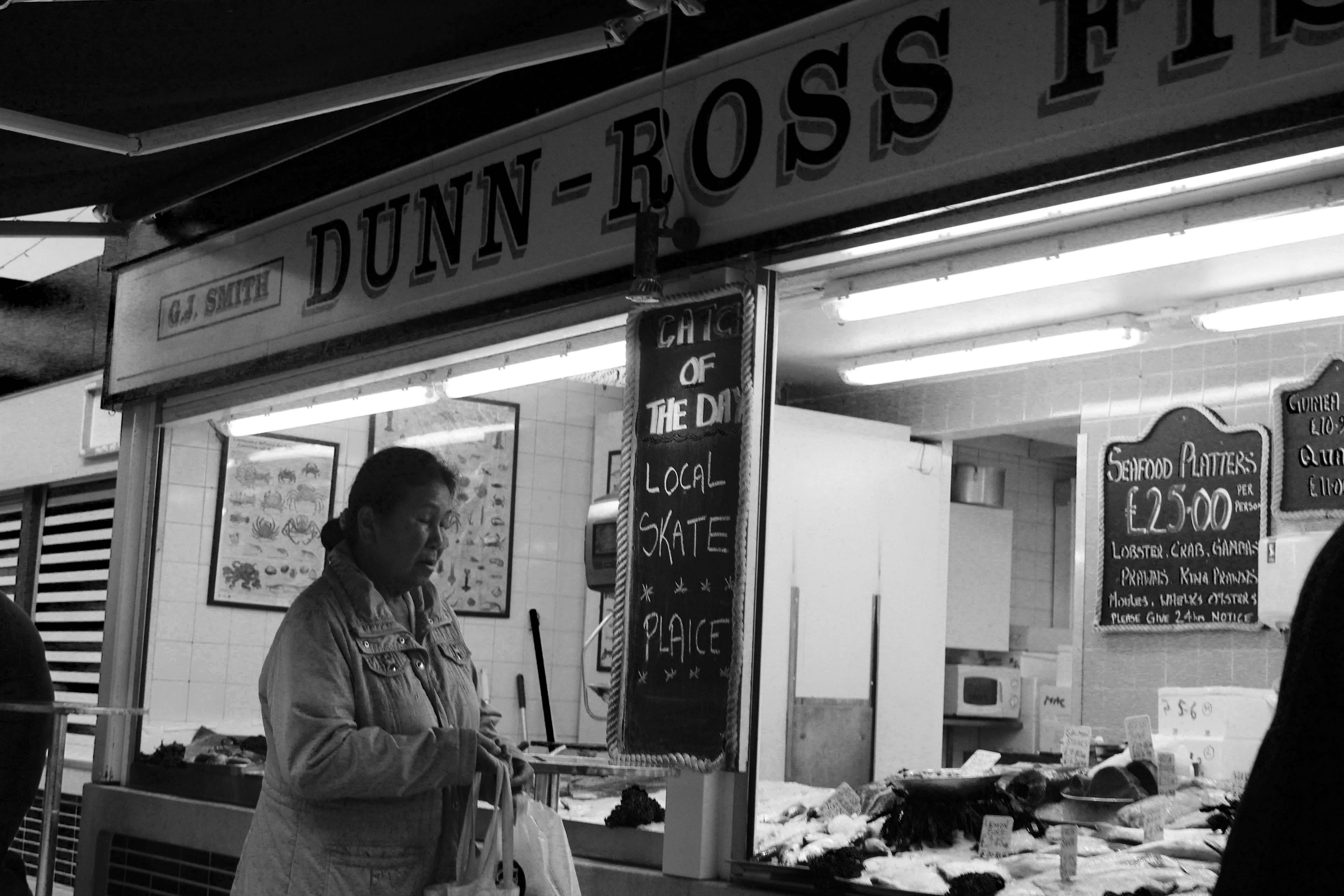
EVALUATION
Taking street photography was very nerve-raking as you had to take photos of strangers, and some of them may have not wanted you too. The struggles I had during this shoot as trying to get steady images that were in focus and sharp ,whilst maintaining the correct settings, this was hard as I was always on the go, quickly trying to snap something before the moment was too late. I found street photography pressurizing but it was lots of fun.
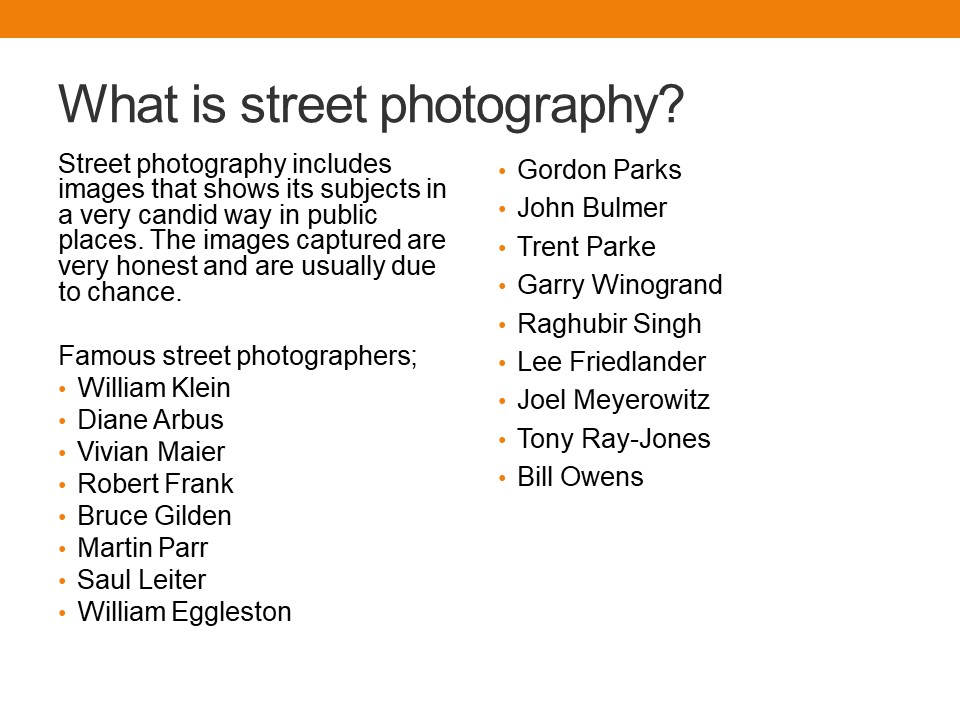
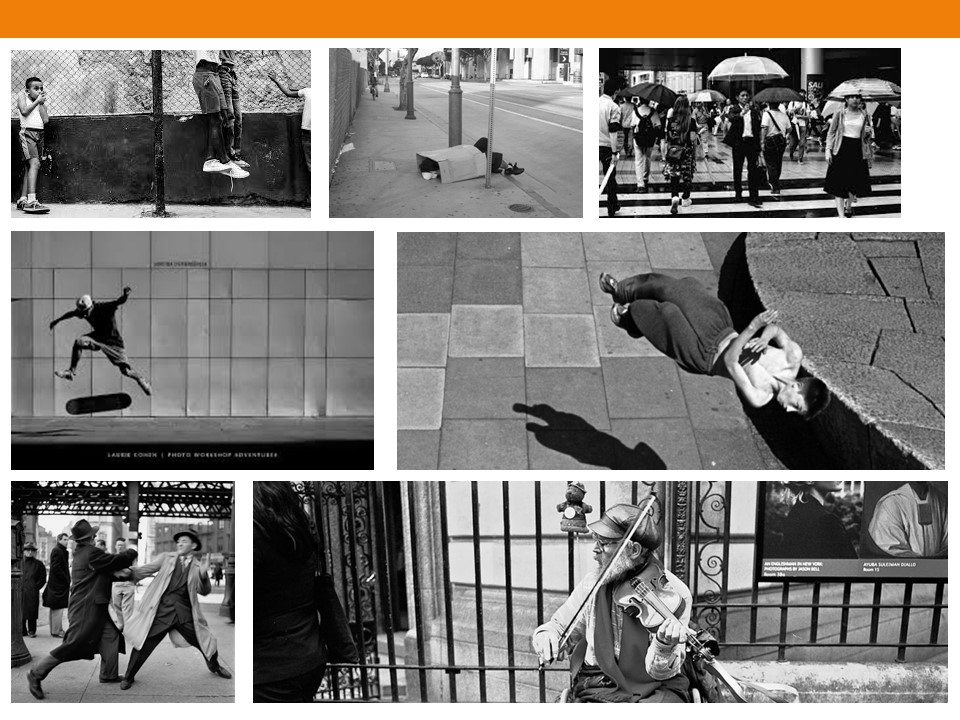
“If your photos aren’t good enough, then you’re not close enough” – Robert Capa
“I love the people I photograph. I mean, they’re my friends. I’ve never met most of them or I don’t know them at all, yet through my images I live with them.” – Bruce Gilden
“When you photograph people in color, you photograph their clothes. But when you photograph people in Black and white, you photograph their souls!”
―
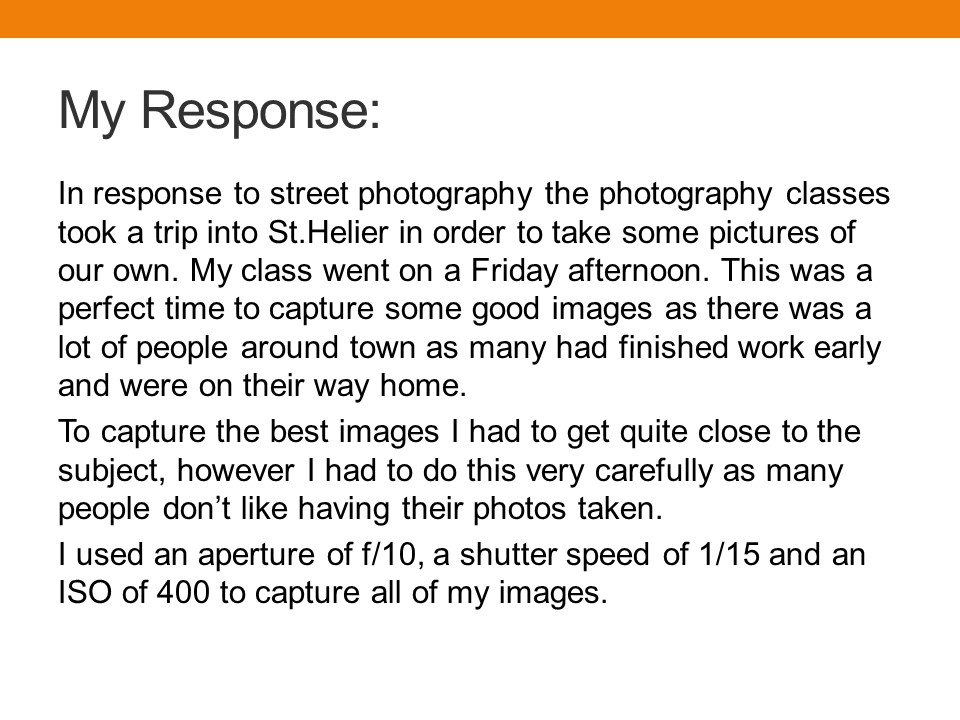


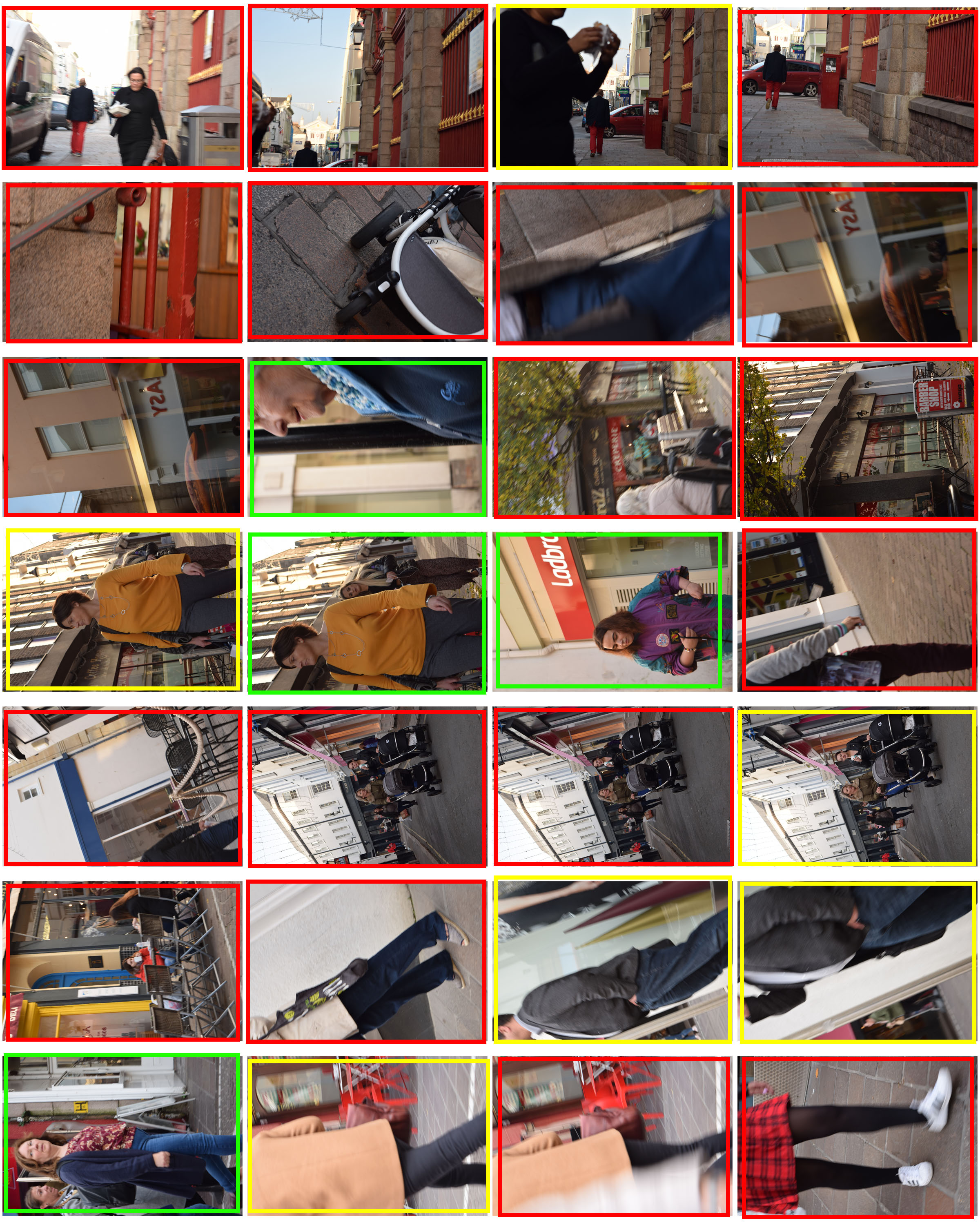
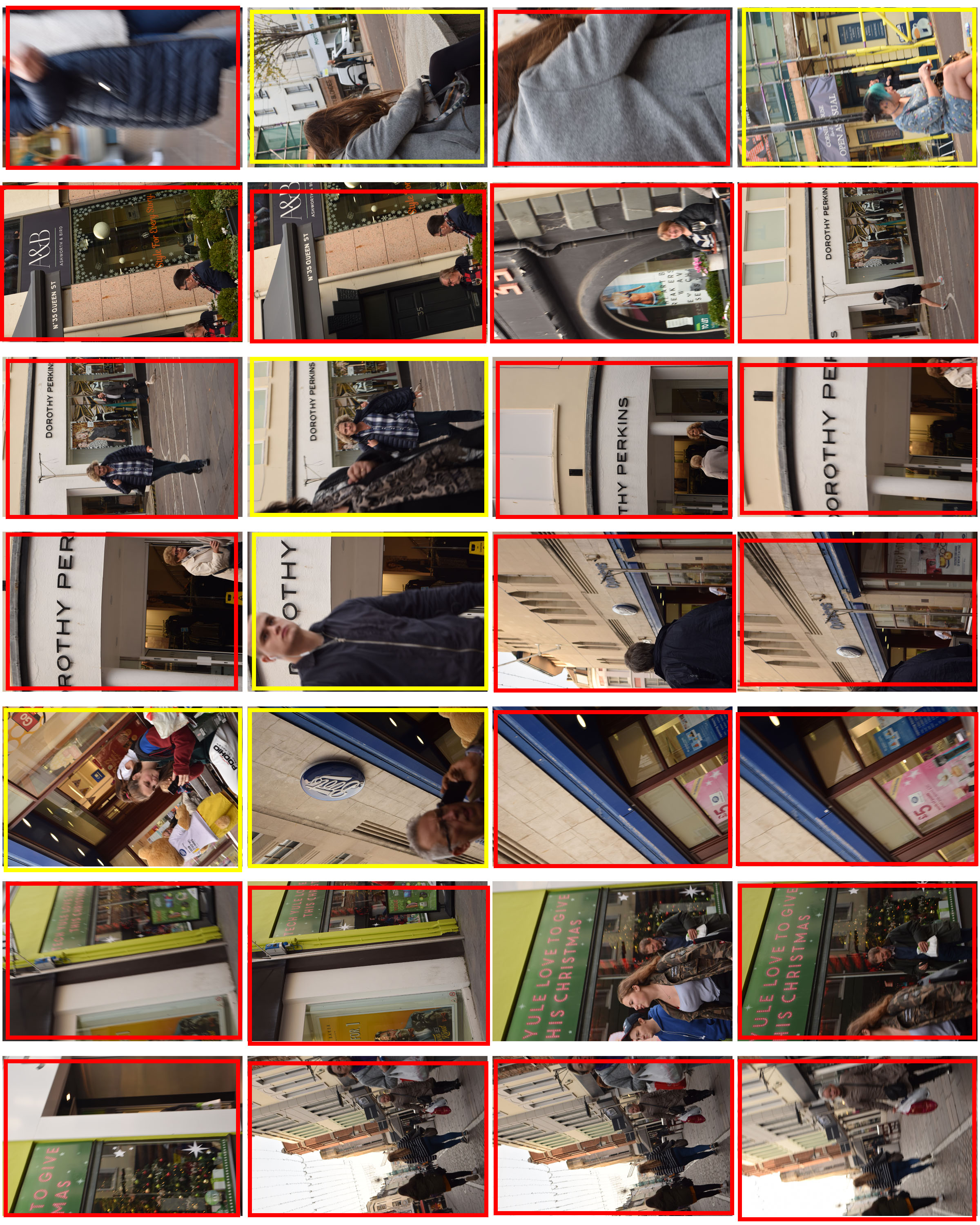
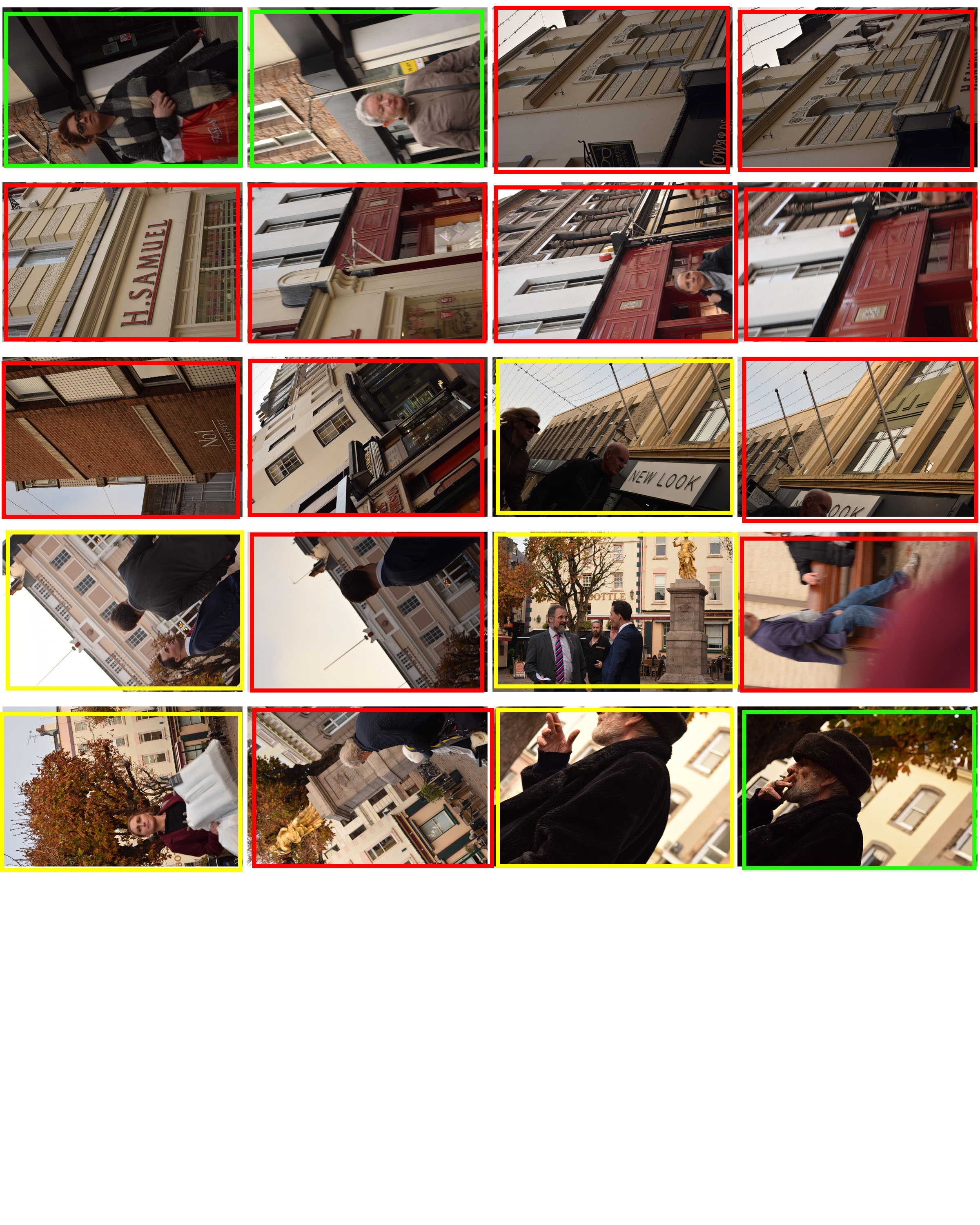
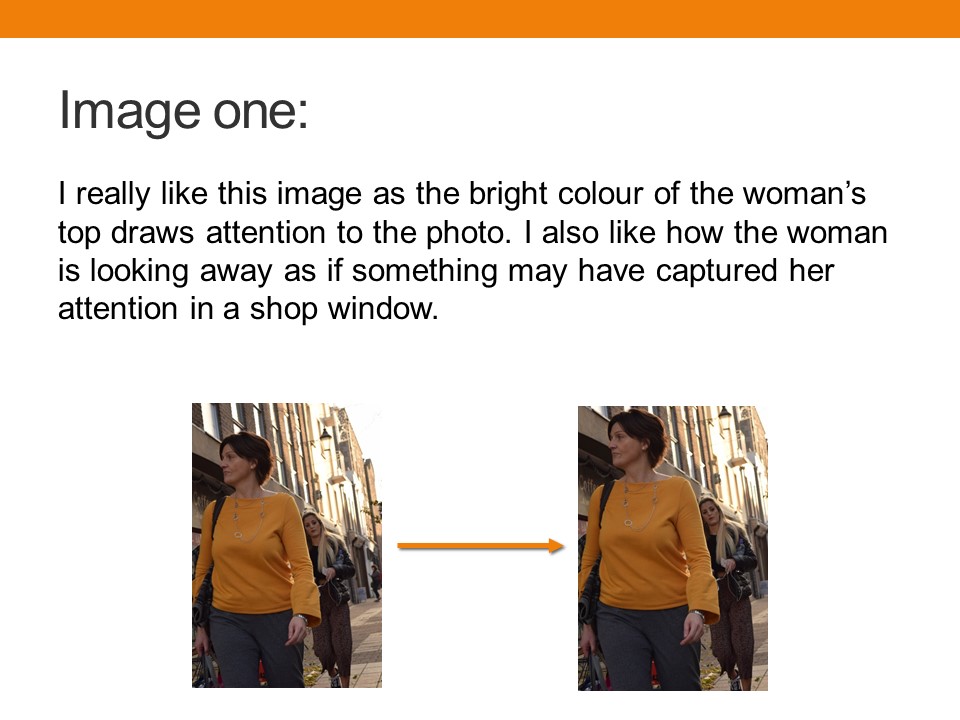
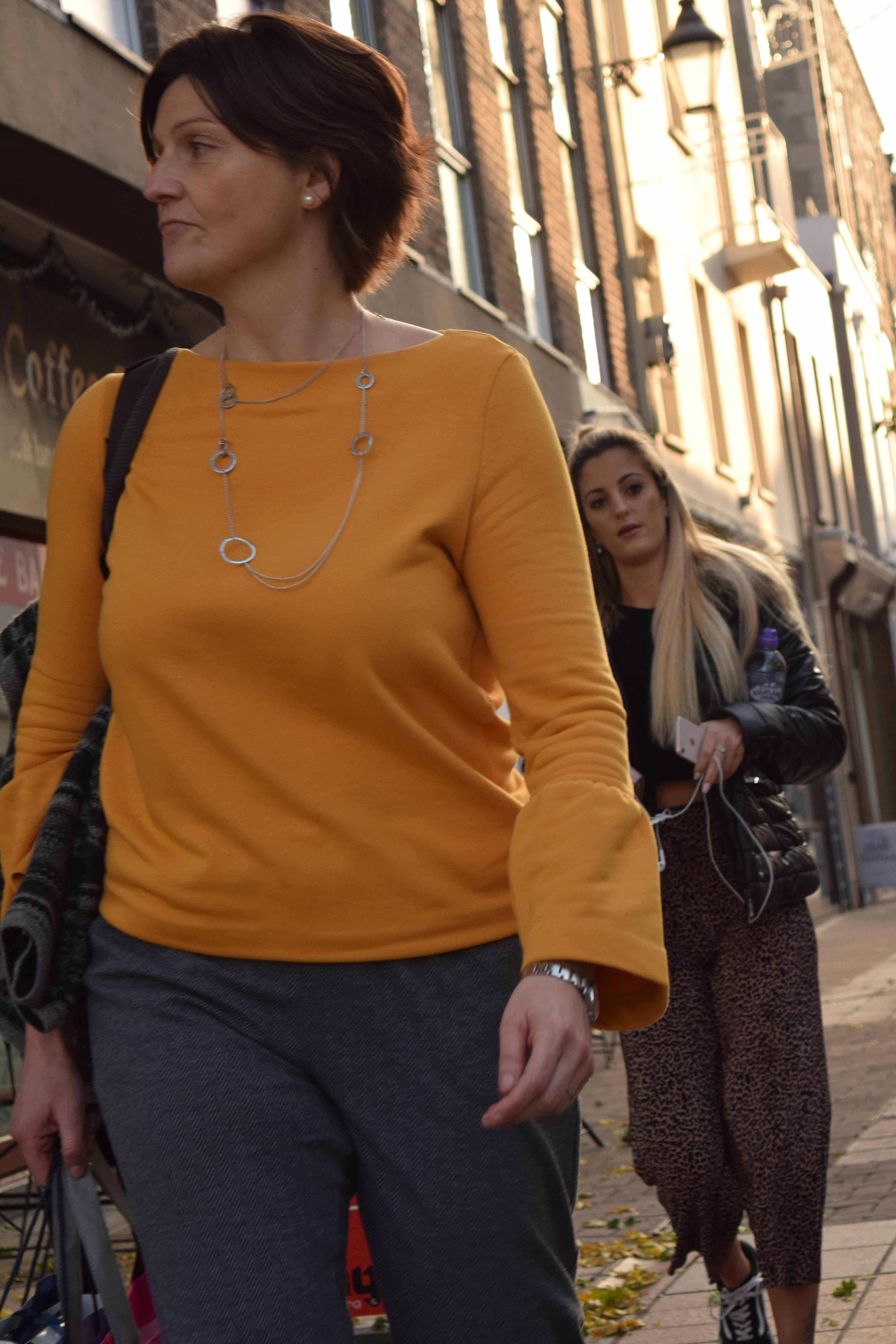
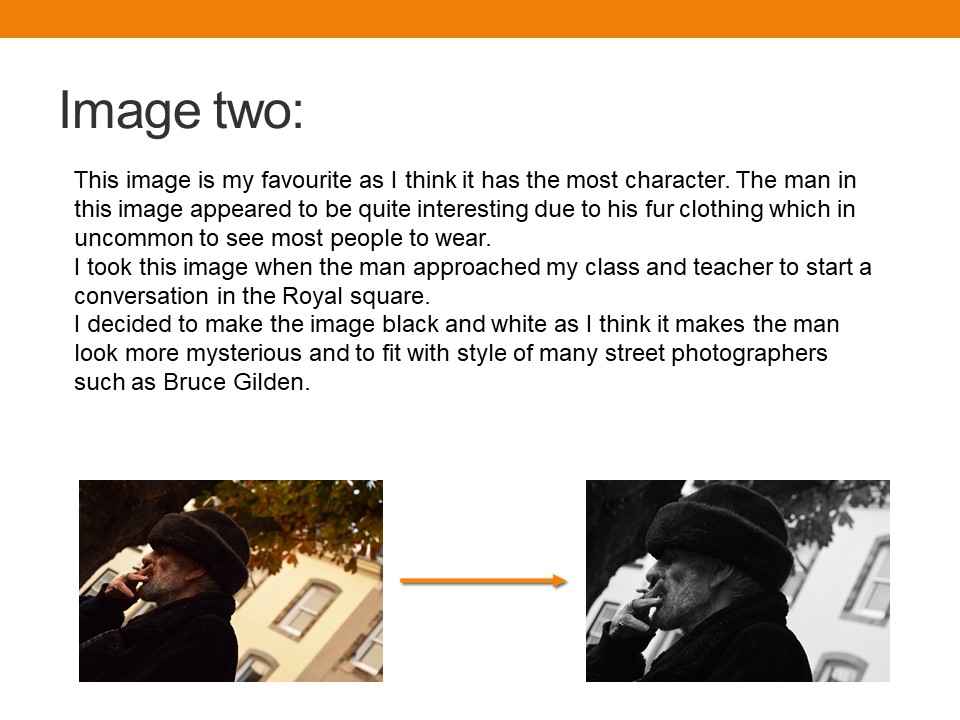
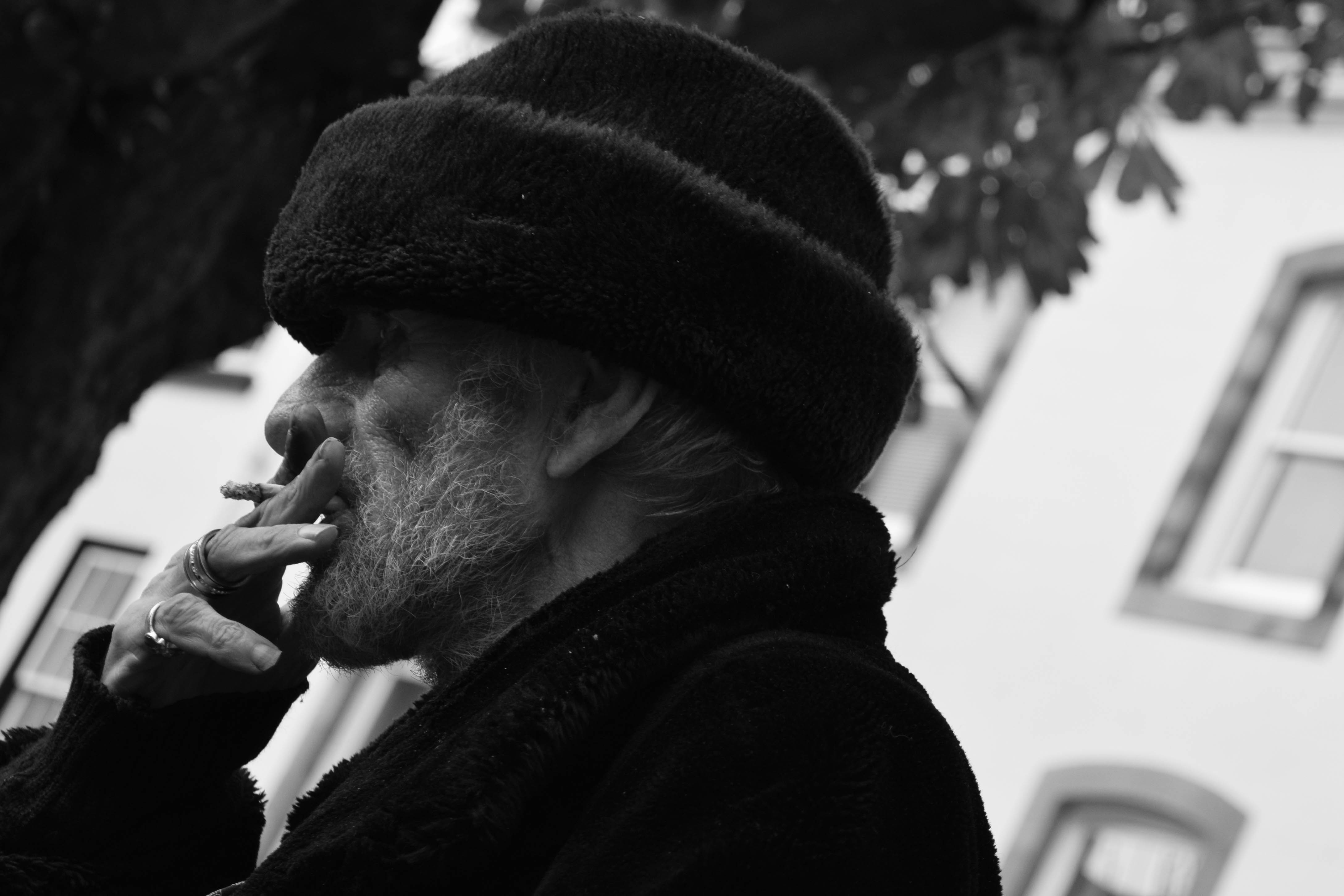
Here I will be editing the best outcomes from my previous photo shoot. Although these were my best images, I think that some are slightly over and under exposed so I plan to attempt to fix this by editing them on Photoshop.
Original image


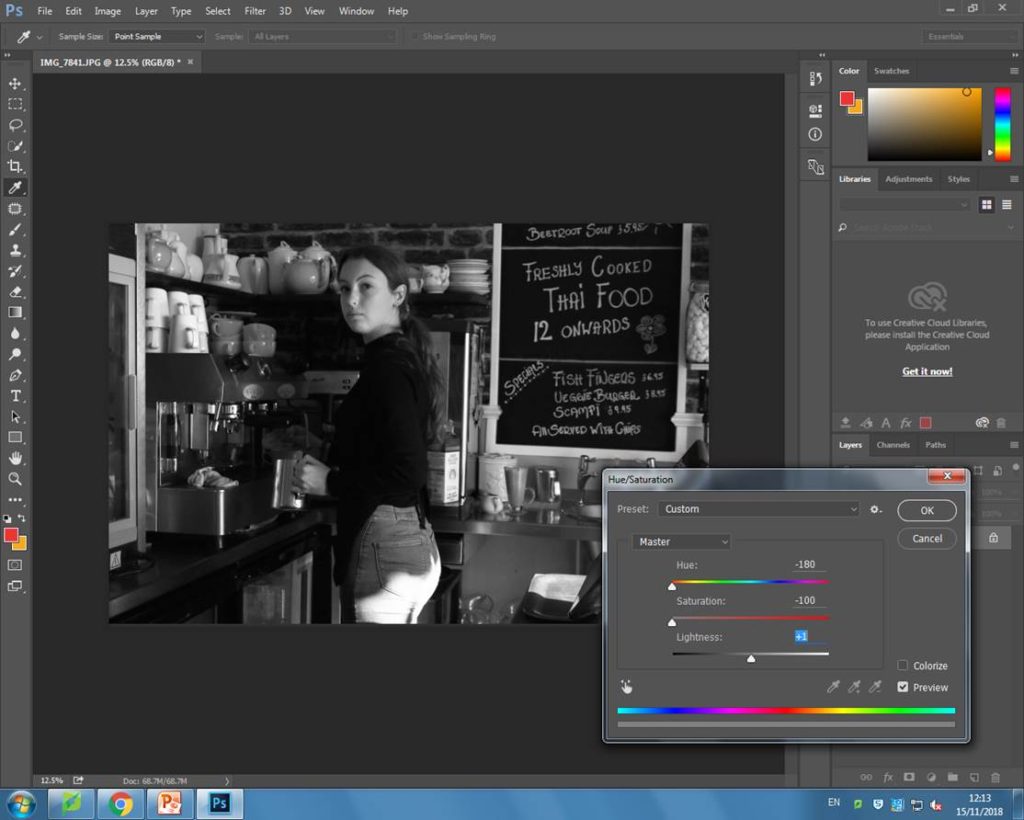
Final outcome
 To edit this photo I adjusted the curves so that it was slightly more saturated, as I thought this would make the overexposed white part at the bottom a little less noticeable, as the background colours would stand out a lot more. Doing that also brought down the brightness slightly, meaning that it also contributed to making sure the whiteness was less prominent. Lastly I also turned the hue and saturation right down so I was able to make the image black and white. I decided to make the image black and white instead of highly saturated for 2 reasons. Firstly, because I thought that if the image was in black and white, the overexposed part wouldn’t be as visible, and secondly, because I wanted to add an element into my image that shows I was slightly inspired by Sander as all his images were in black and white. I think this was a really good idea as it meant that I added a vintage touch into my modern day inspired environmental photography.
To edit this photo I adjusted the curves so that it was slightly more saturated, as I thought this would make the overexposed white part at the bottom a little less noticeable, as the background colours would stand out a lot more. Doing that also brought down the brightness slightly, meaning that it also contributed to making sure the whiteness was less prominent. Lastly I also turned the hue and saturation right down so I was able to make the image black and white. I decided to make the image black and white instead of highly saturated for 2 reasons. Firstly, because I thought that if the image was in black and white, the overexposed part wouldn’t be as visible, and secondly, because I wanted to add an element into my image that shows I was slightly inspired by Sander as all his images were in black and white. I think this was a really good idea as it meant that I added a vintage touch into my modern day inspired environmental photography.
Original image
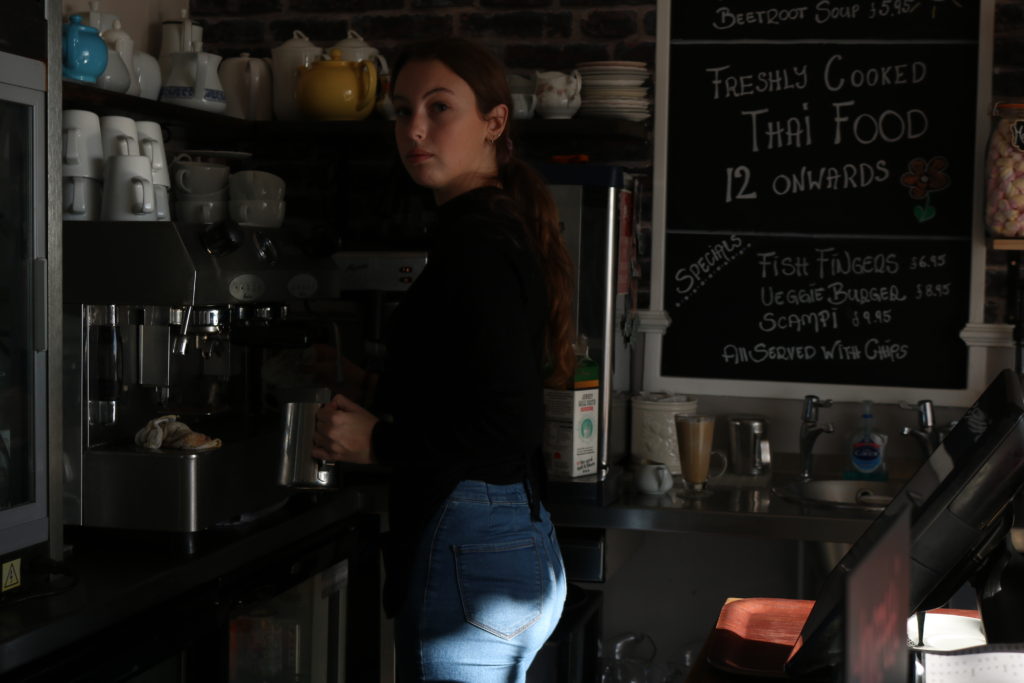


Final outcome
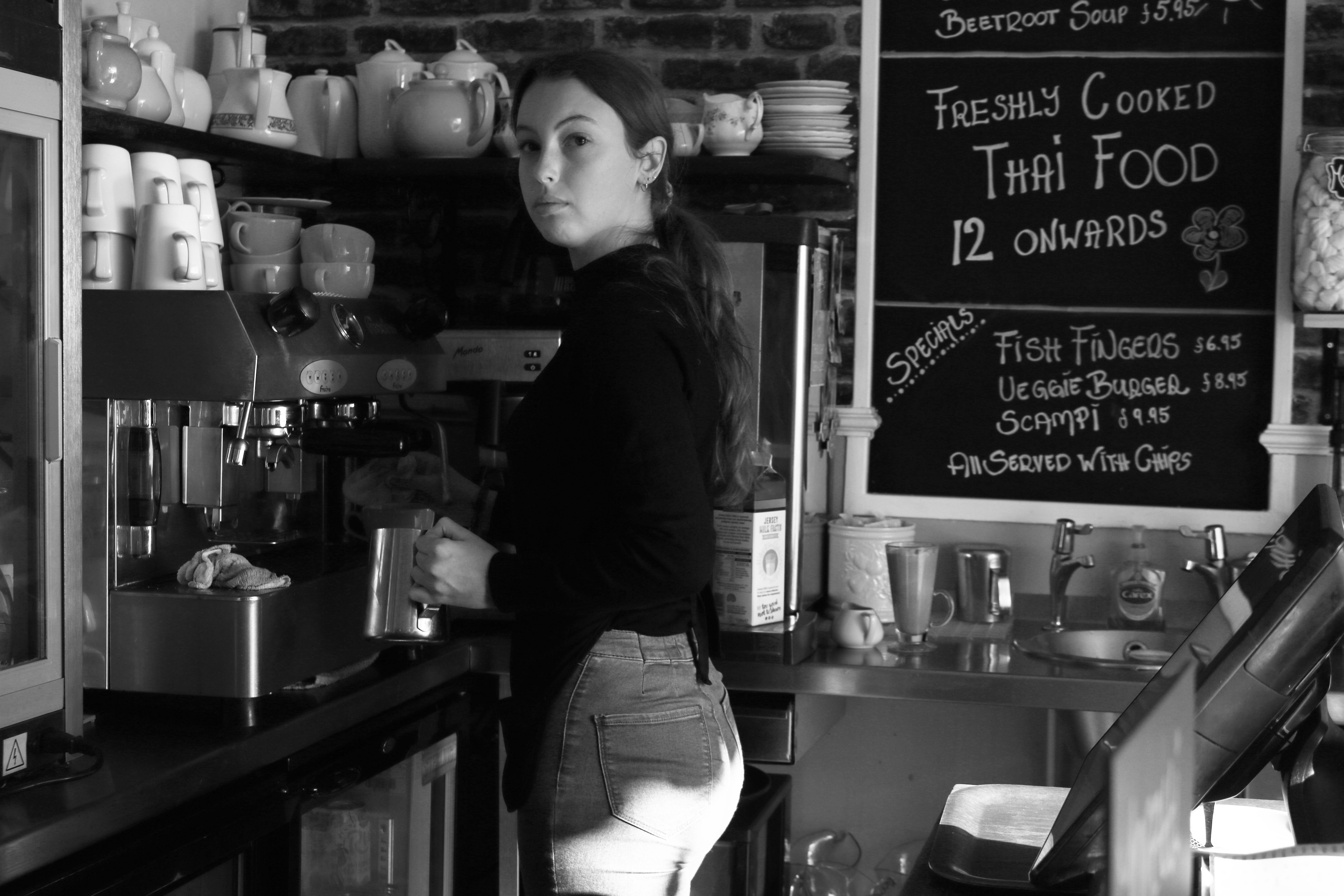 When looking at this photo, although it was far too underexposed I thought that it was an image with potential because of how the model was making intense eye contact with the camera. To edit it, I turned the brightness all the way up, so that the image wasn’t so dark. To make it fit in with my other image, and did the same technique that I mentioned previously and turned the hue and saturation all the way down to make the photo black and white.. I think that the intense stare that the model is giving, combined with a black and white filter makes the image far more successful as it makes it more dramatic and mysterious.
When looking at this photo, although it was far too underexposed I thought that it was an image with potential because of how the model was making intense eye contact with the camera. To edit it, I turned the brightness all the way up, so that the image wasn’t so dark. To make it fit in with my other image, and did the same technique that I mentioned previously and turned the hue and saturation all the way down to make the photo black and white.. I think that the intense stare that the model is giving, combined with a black and white filter makes the image far more successful as it makes it more dramatic and mysterious.

I have chosen to go in the direction of either strong shapes (e.g. buildings) or showing people’s lives either in commute or their workplace.
However, I haven’t yet decided if I’m going to follow the common theme of making the photos black & white as I think leaving the colour in the photo will help it be both more eye catching, as well as helping portray certain aspects such as colours wearing out (which you can’t see in black & white).
Street Photography:
Street photography, also sometimes called candid photography, is photography conducted for art or enquiry that features unmediated chance encounters and random incidents within public places. Although there is a difference between street and candid photography, it is usually subtle with most street photography being candid in nature and some candid photography being classifiable as street photography. Street photography does not necessitate the presence of a street or even the urban environment. Though people usually feature directly, street photography might be absent of people and can be of an object or environment where the image projects a decidedly human character in facsimile or aesthetic.
The photographer is an armed version of the solitary walker reconnoitering, stalking, cruising the urban inferno, the voyeuristic stroller who discovers the city as a landscape of voluptuous extremes. Adept of the joys of watching, connoisseur of empathy, the flâneur finds the world “picturesque”.
Susan Sontag, 1977
The street photographer can be seen as an extension of the flâneur, an observer of the streets (who was often a writer or artist).Street photography can focus on people and their behavior in public, thereby also recording people’s history
Qoutes about Street Photography:
Threshold concept #7:
The meanings of photographs are never fixed, are not contained solely within the photographs themselves and rely on a combination of the viewer’s sensitivity, knowledge and understanding, and the specific context in which the image is seen.
“The Decisive Moment” – Henri Cartier-Bresson:
Henri Cartier-Bresson was born on August 22, 1908 in Chanteloup, France. A pioneer in photojournalism, Cartier-Bresson wandered around the world with his camera, becoming totally immersed in his current environment. Considered one of the major artists of the 20th century, he covered many of the world biggest events from the Spanish Civil War to the French uprisings in 1968.
In his early years, Cartier-Bresson was widely considered one of the leading artistic forces of the 20th century, Henri Cartier-Bresson was born on August 22, 1908 in Chanteloup, France. The oldest of five children, his family was wealthy—his father made a fortune as a textile manufacturer—but Cartier-Bresson later joked that due to his parents’ frugal ways, it often seemed as though his family was poor.
Images from Henri Cartier-Bresson’s “The Decisive Moment”:
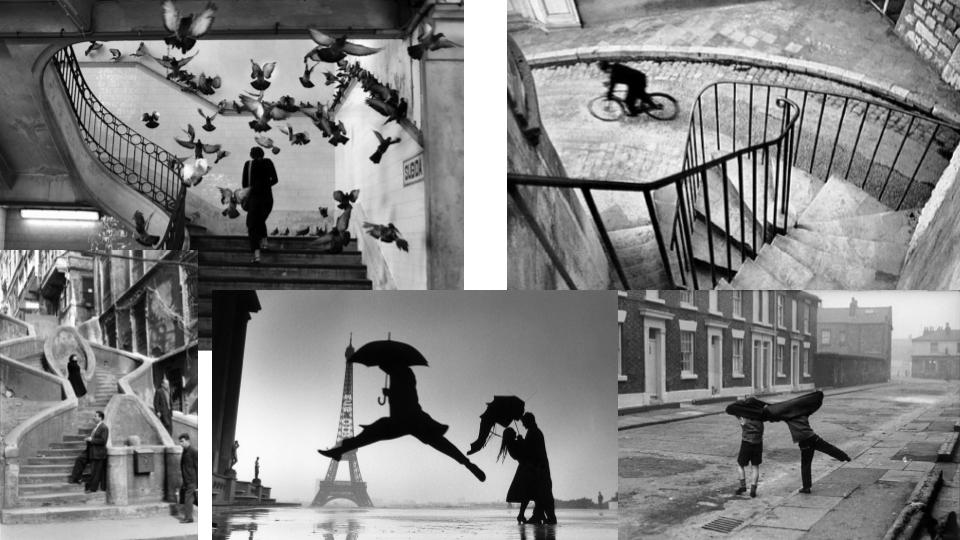
Chosen Image:

Technical:
Visual:
Henri Cartier-Bresson’s contribution to MAGNUM Photo Agency:
Created in 1947 by Robert Capa, Henri Cartier-Bresson, George Rodger, and David Seymour, Magnum Photos today has around 80 members. Martine Franck became a member in 1983.
Magnum Photos is a cooperative wholly owned by its photographer-members. The independence this allows is reflected in the spirit with which subjects are chosen and treated. Magnum photographs are famous for their journalistic and aesthetic qualities. Through its four editorial offices in Paris, New York, London, and Tokyo and a network of fifteen sub-agents, Magnum Photos provides photographs to the press worldwide. At the heart of this activity is a concern to encourage the photographers to carry out their individual projects and to act as sensitive witnesses to world events. The work of Magnum photographers reaches its audience both through the world press and in books and exhibitions.
(The agency is the copyright holder of both Henri Cartier-Bresson and Martine Franck.)